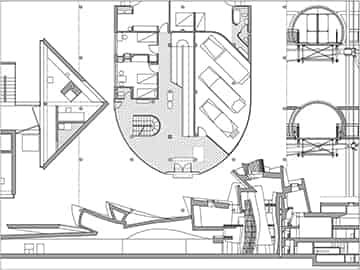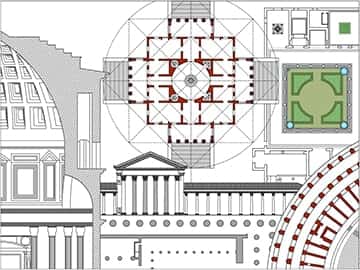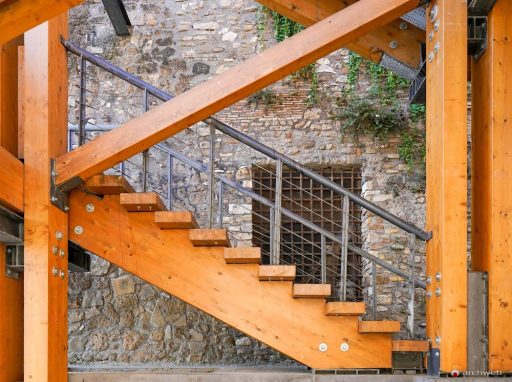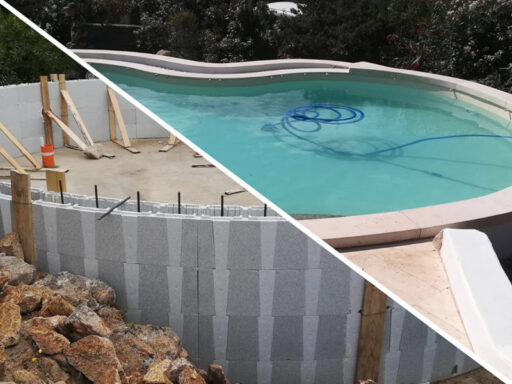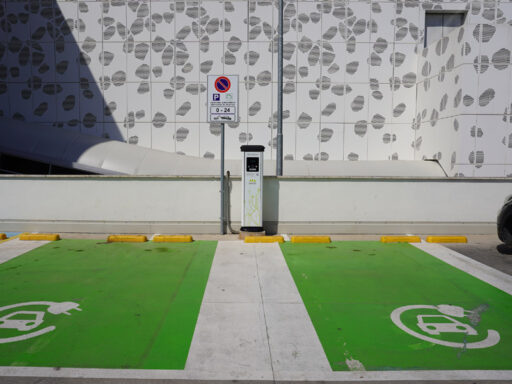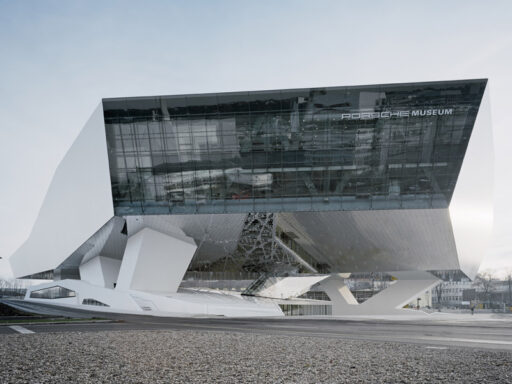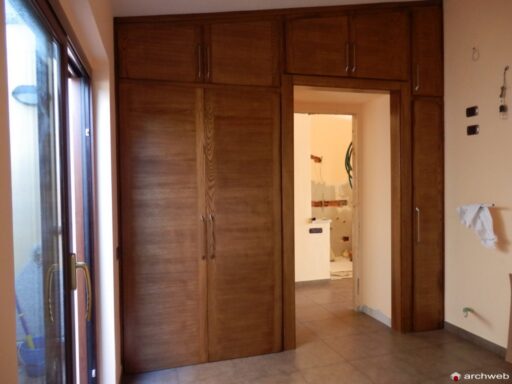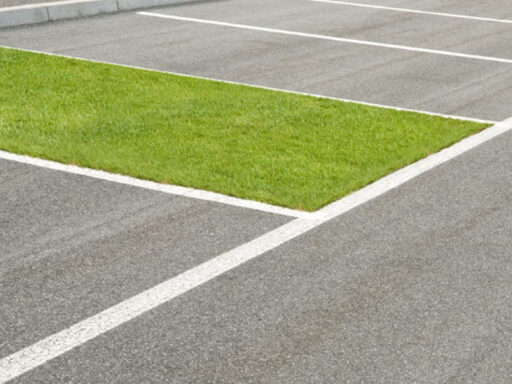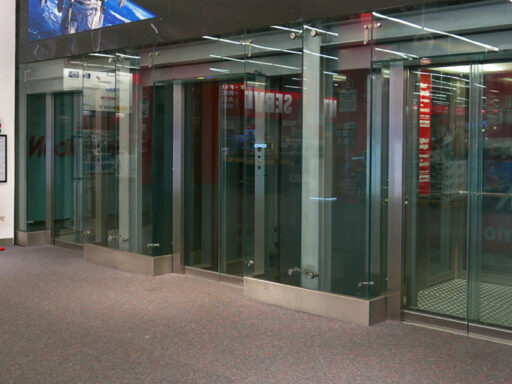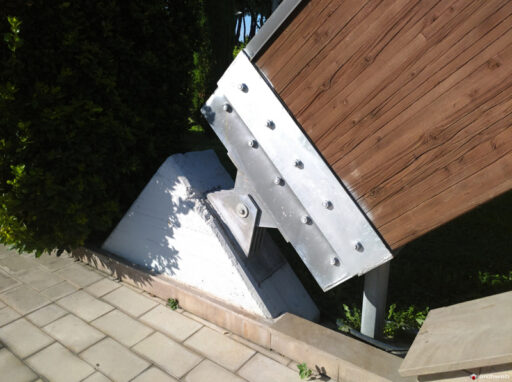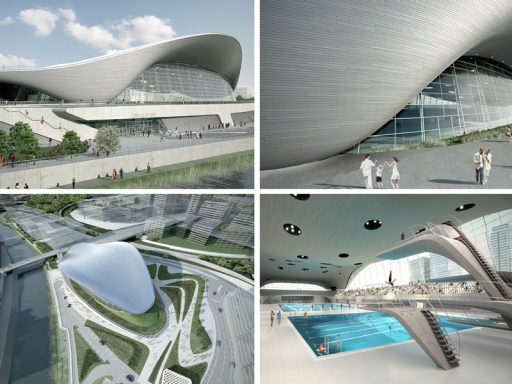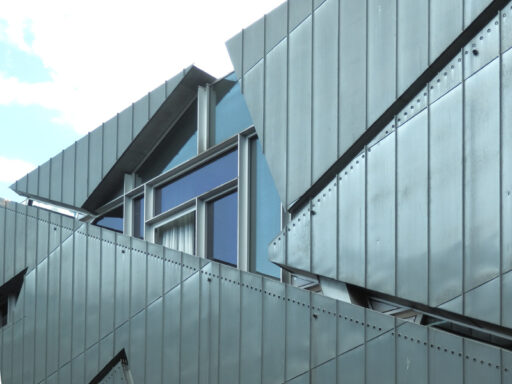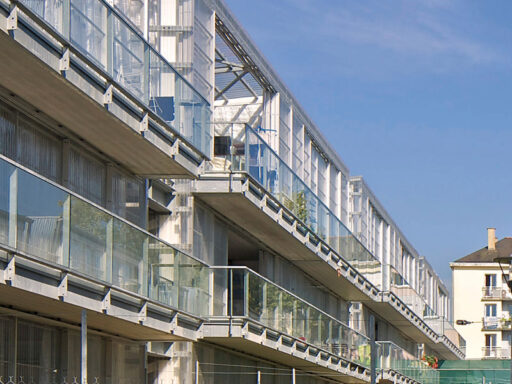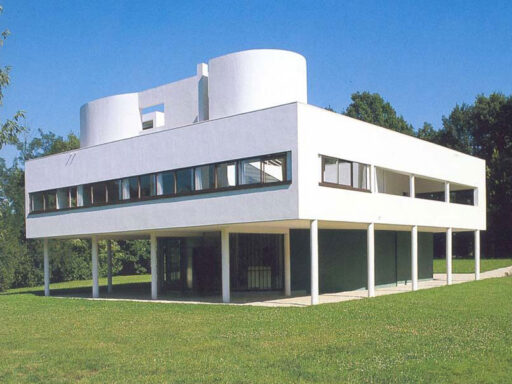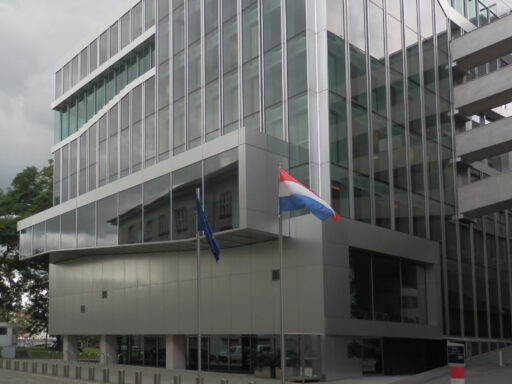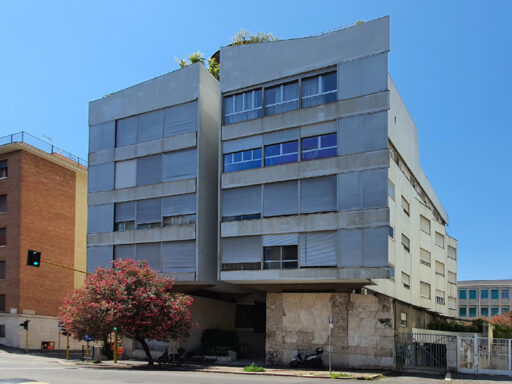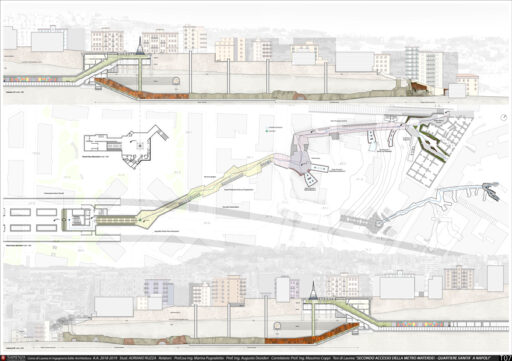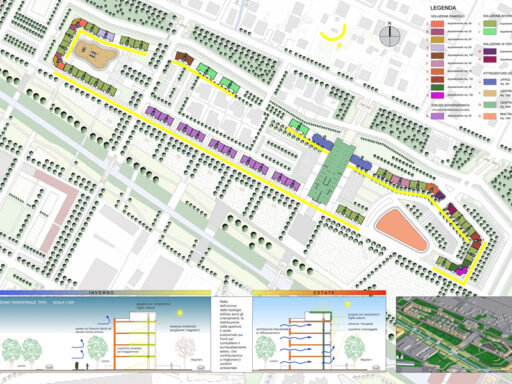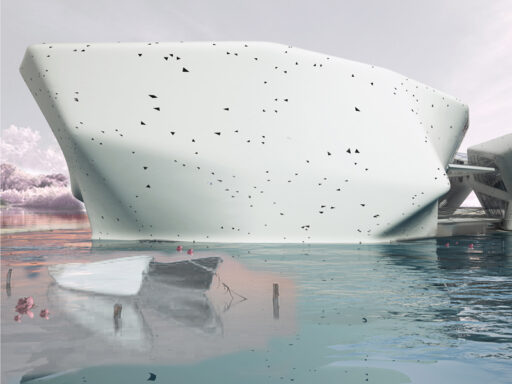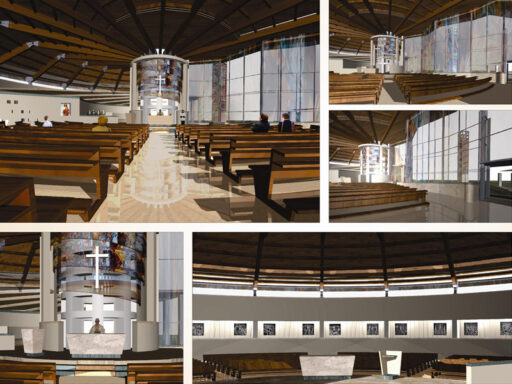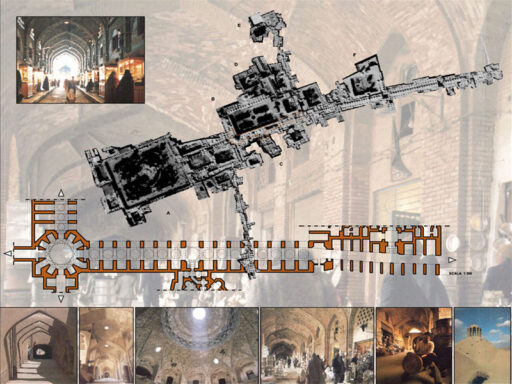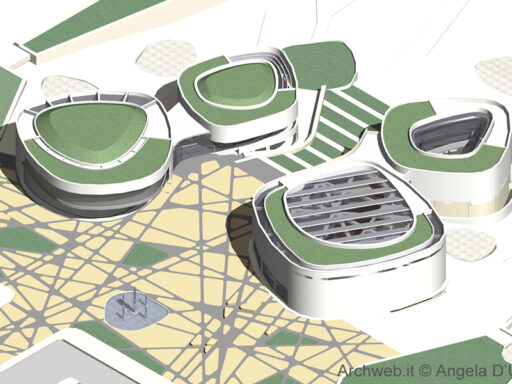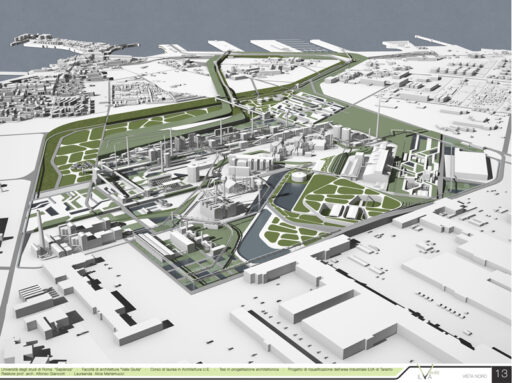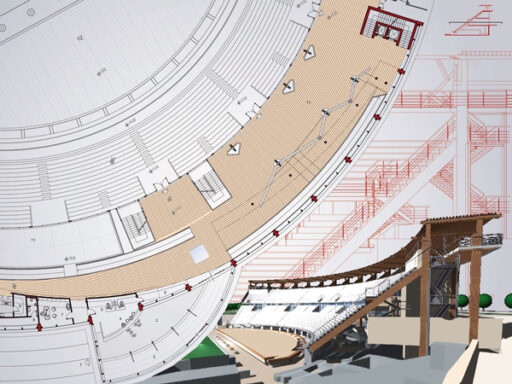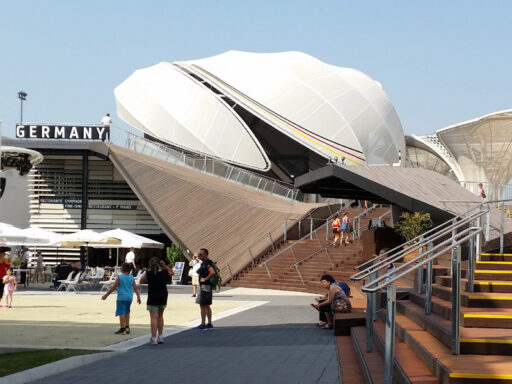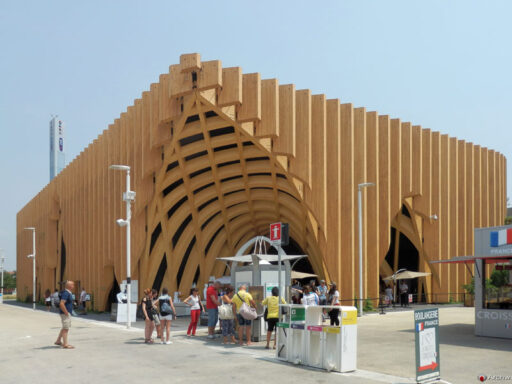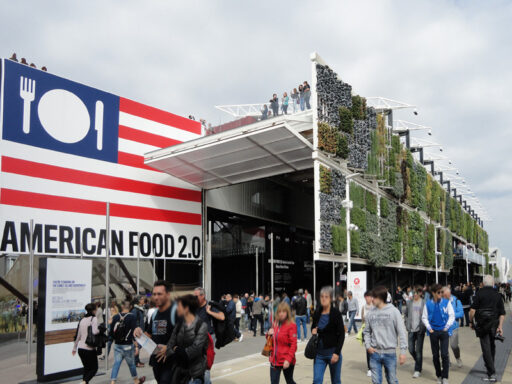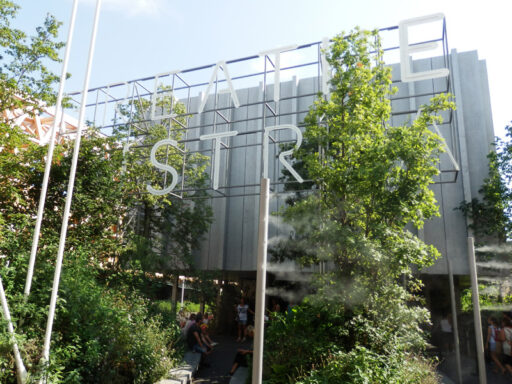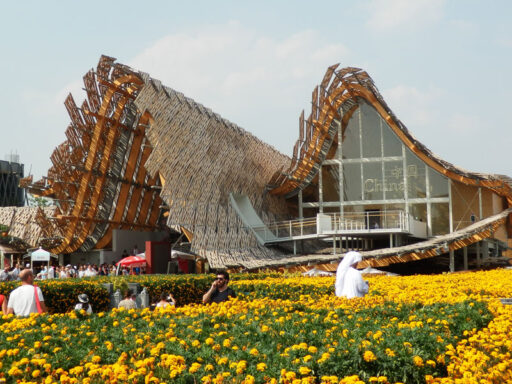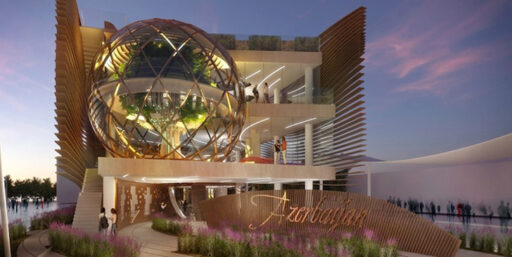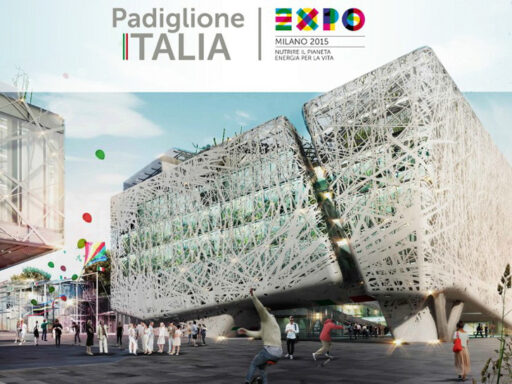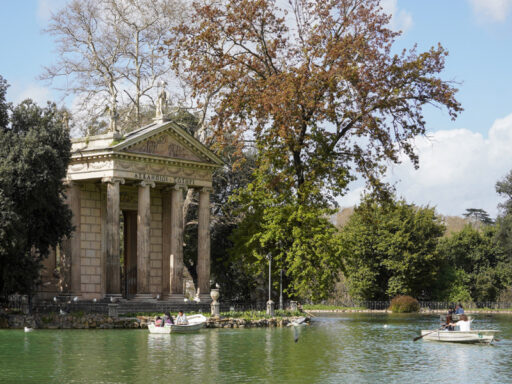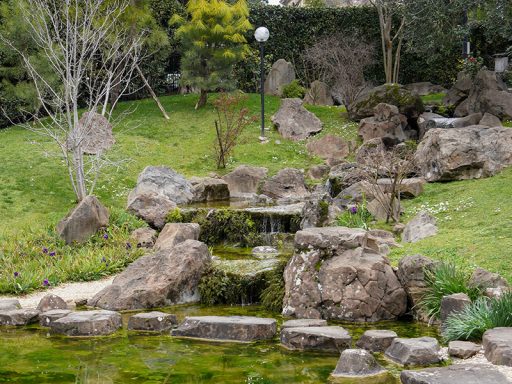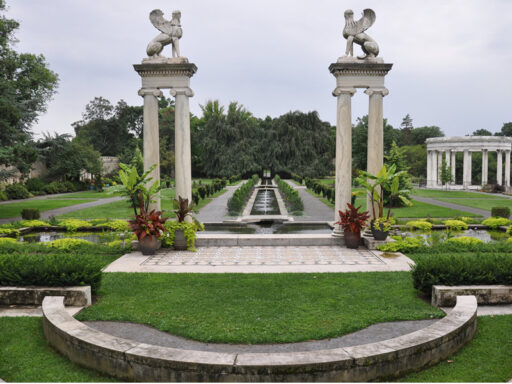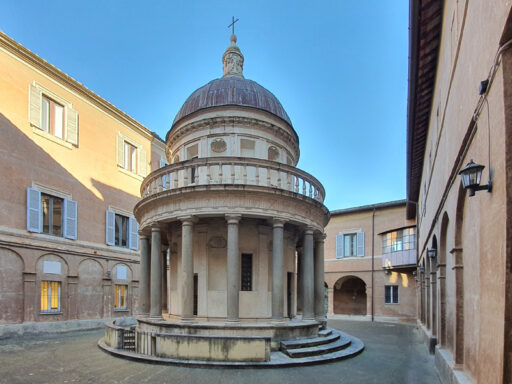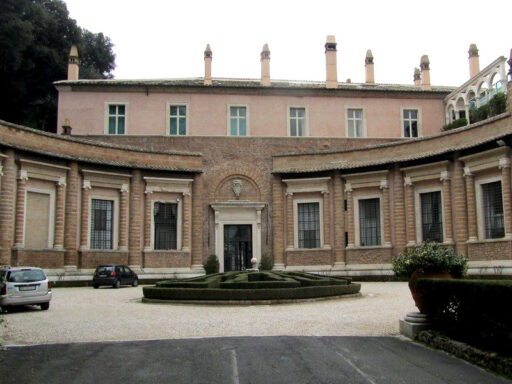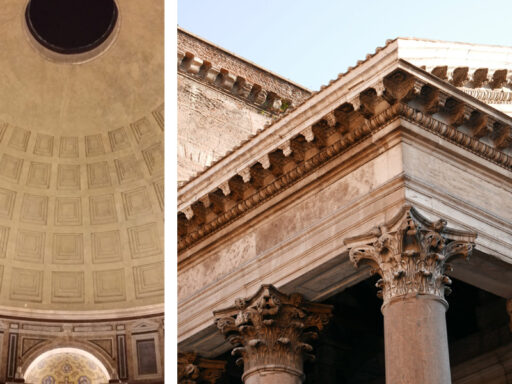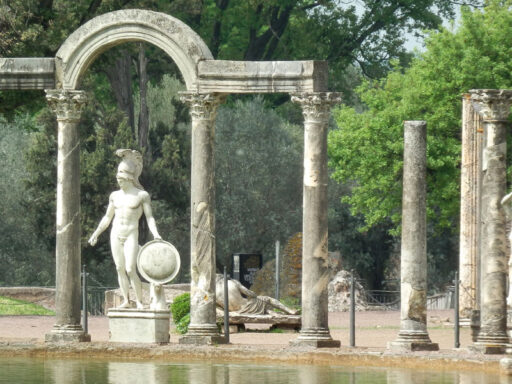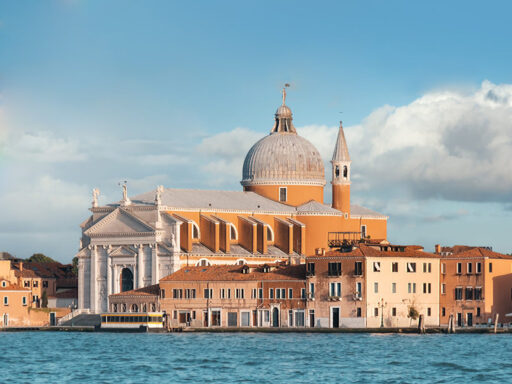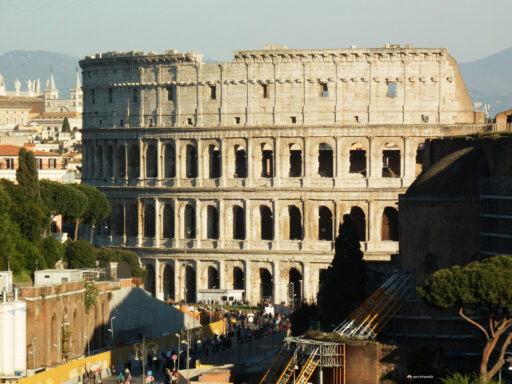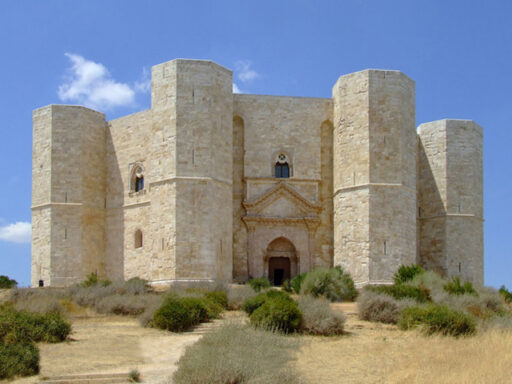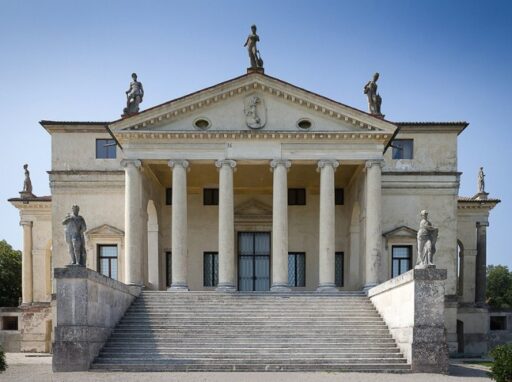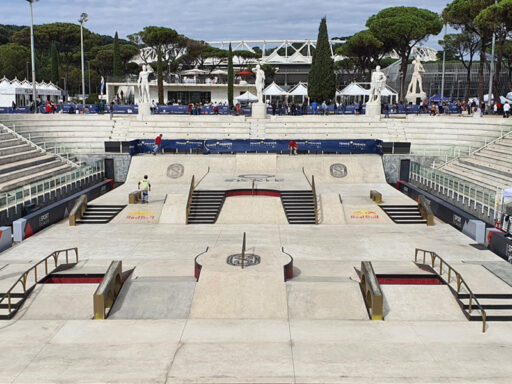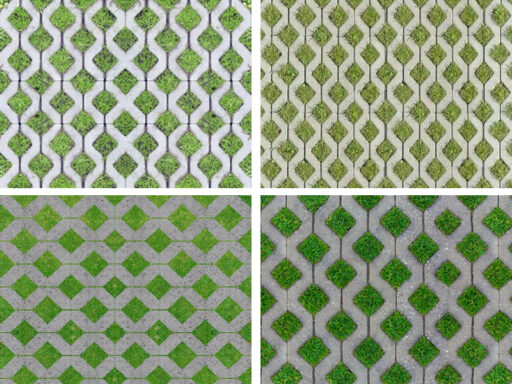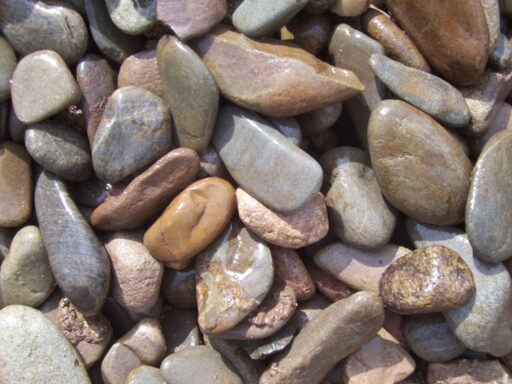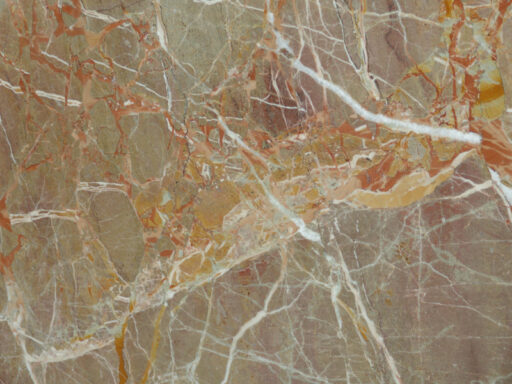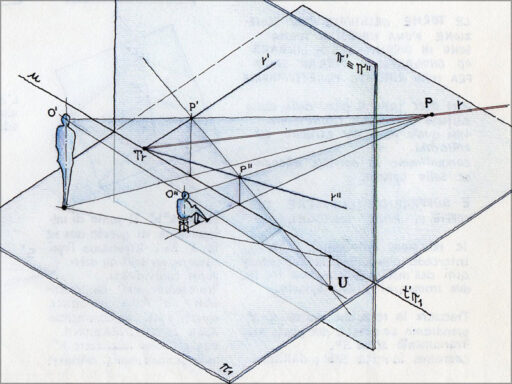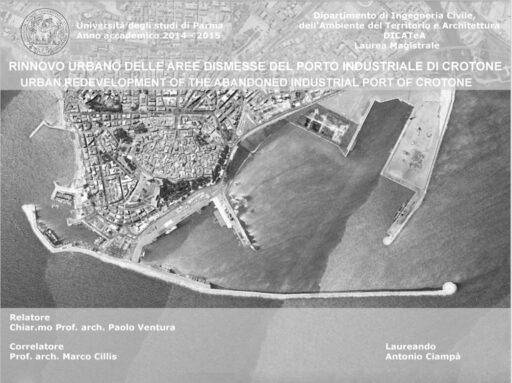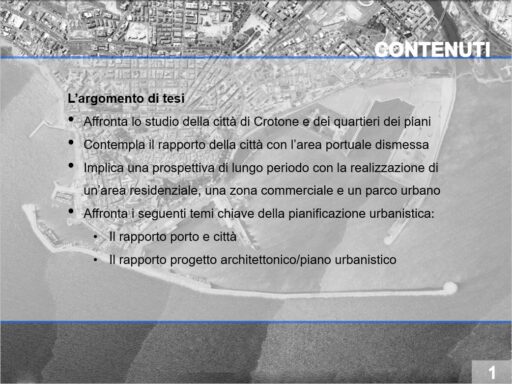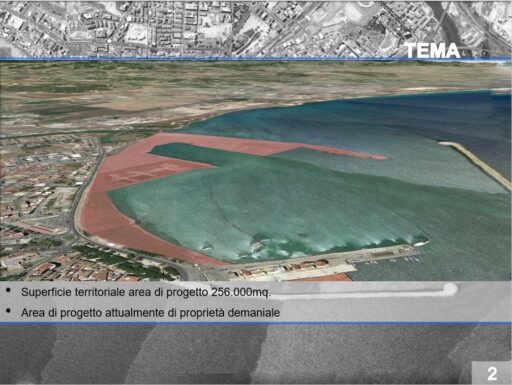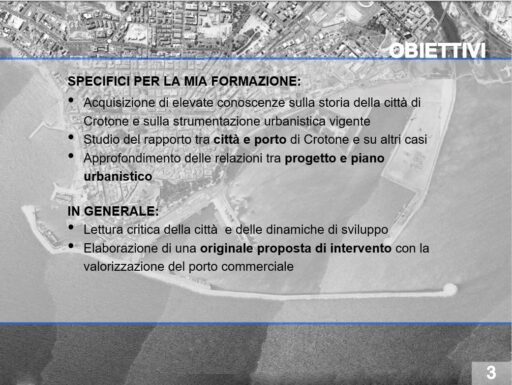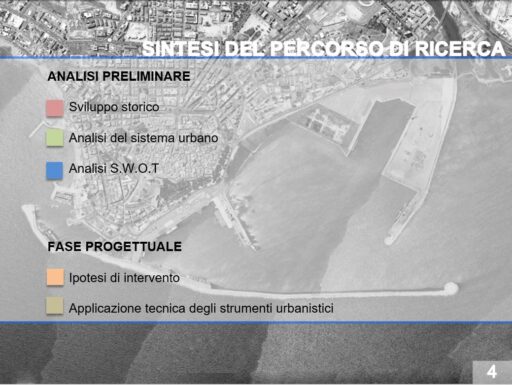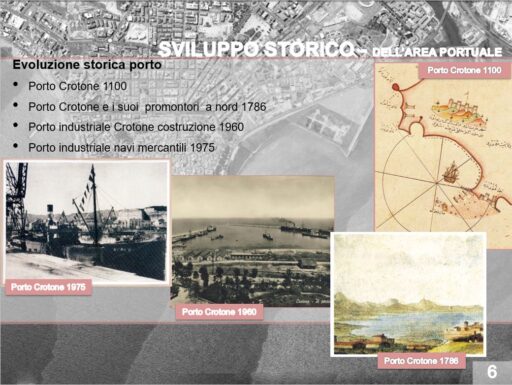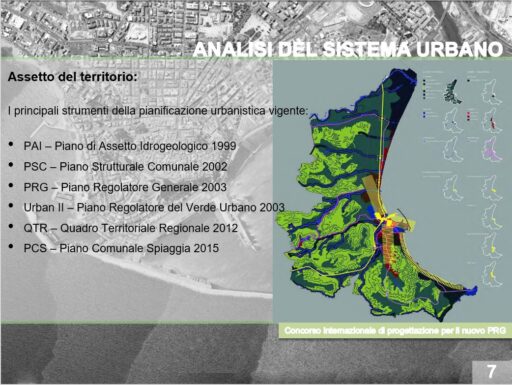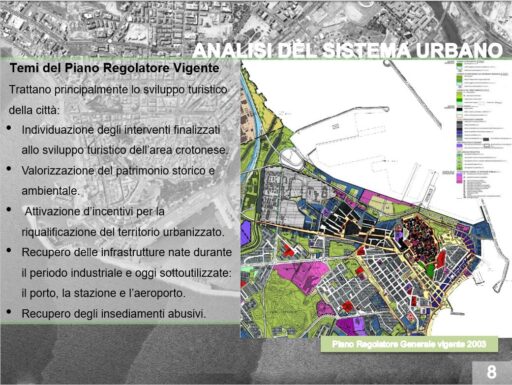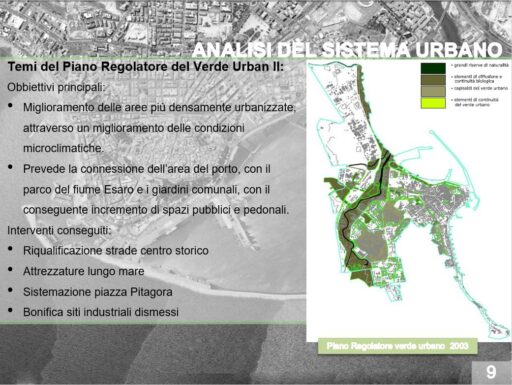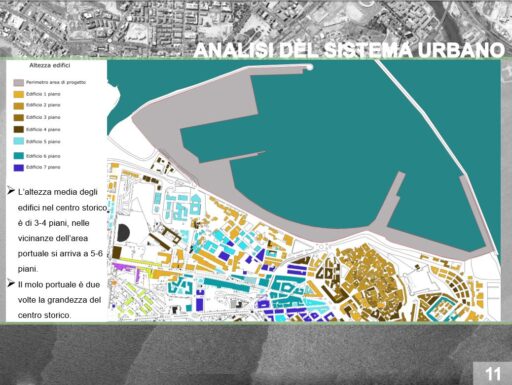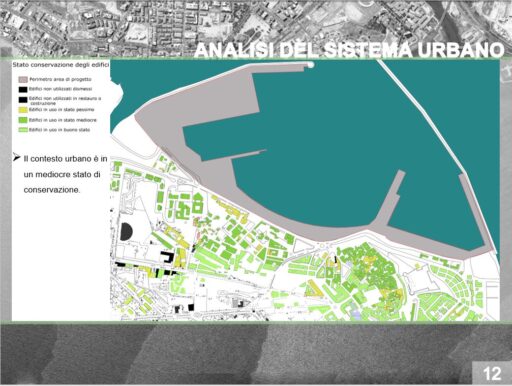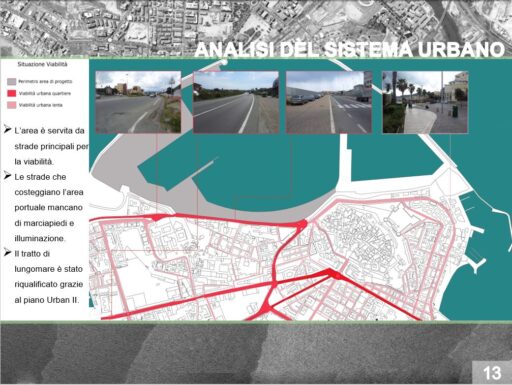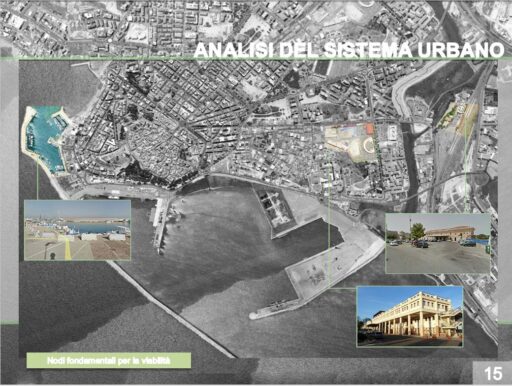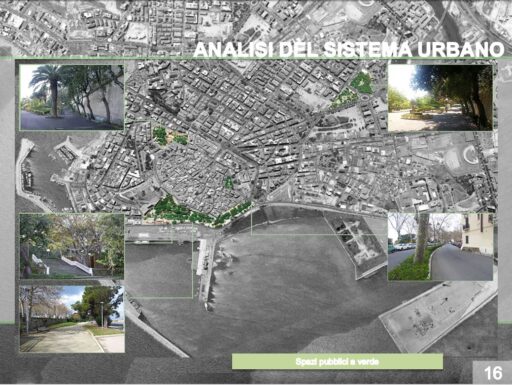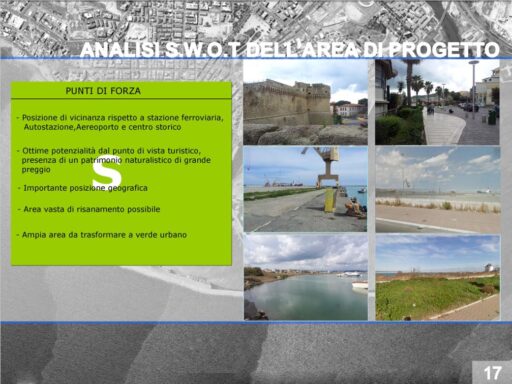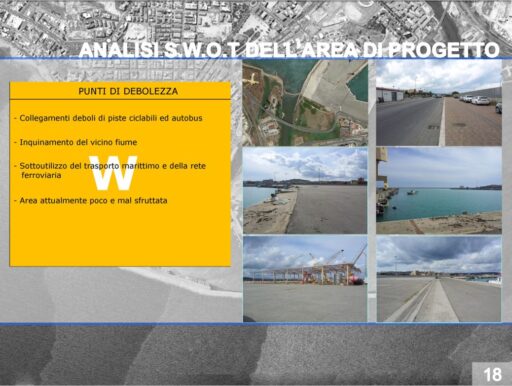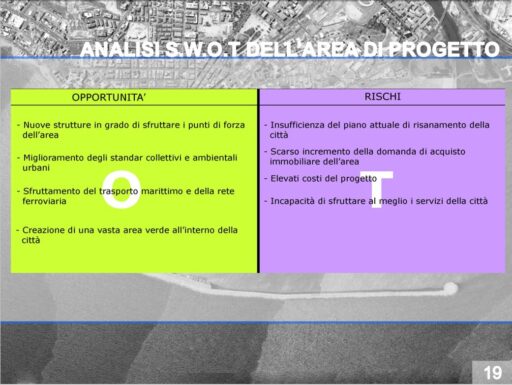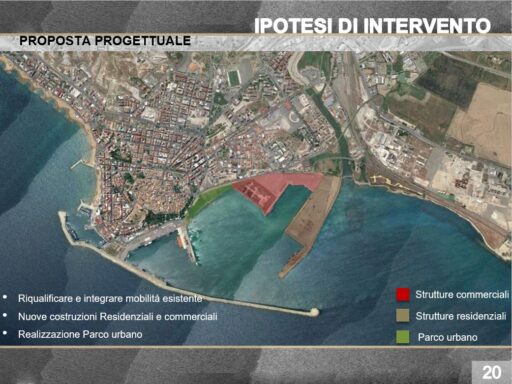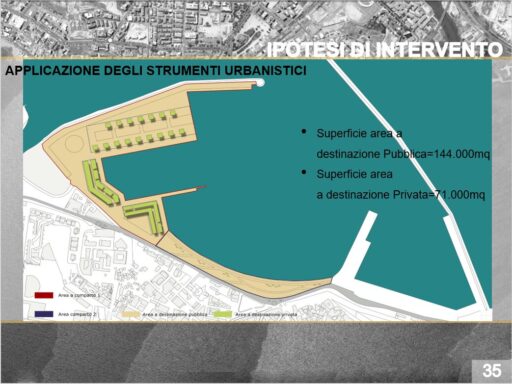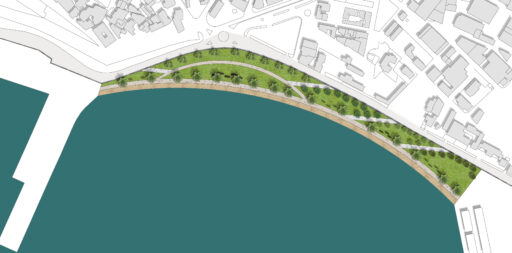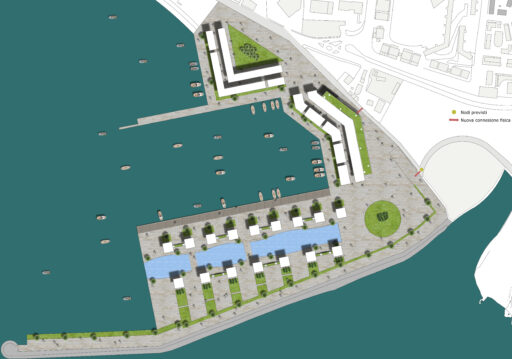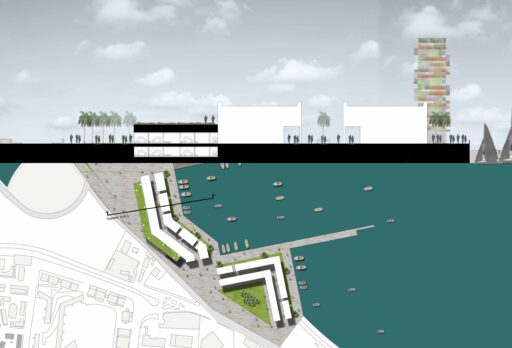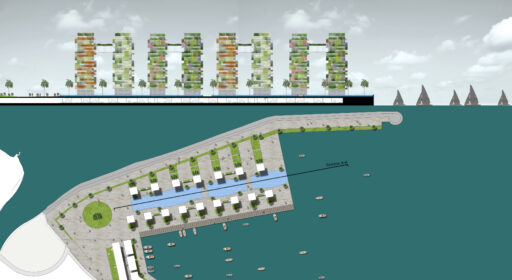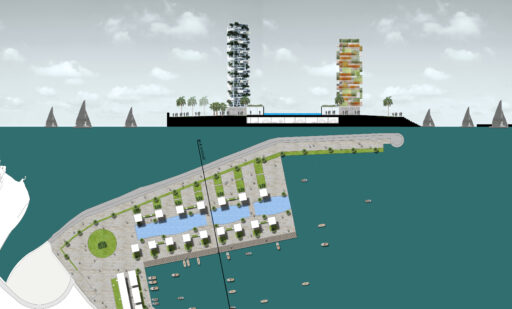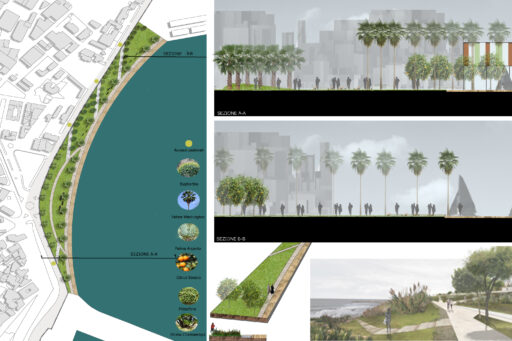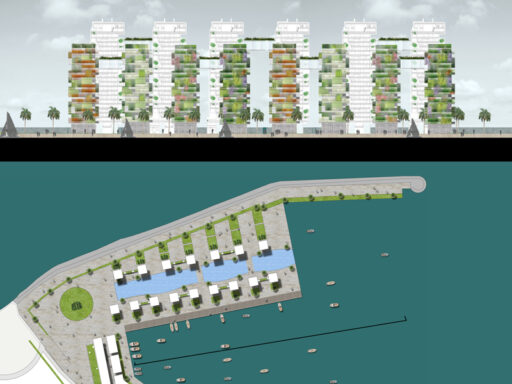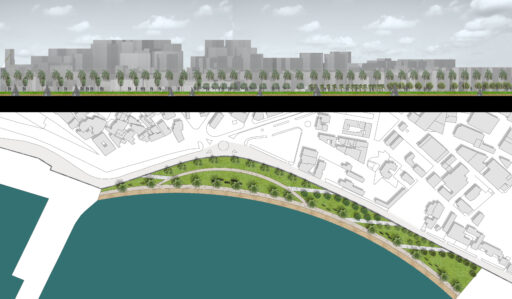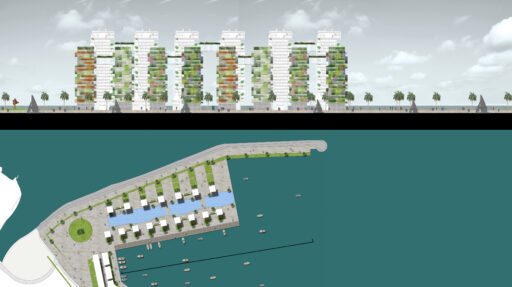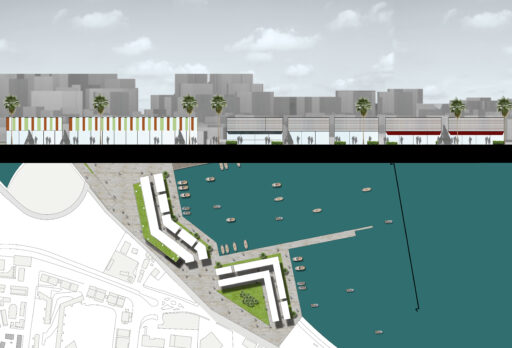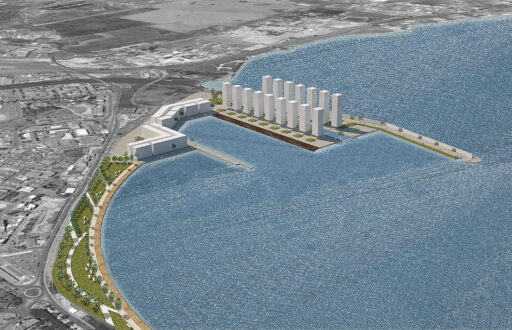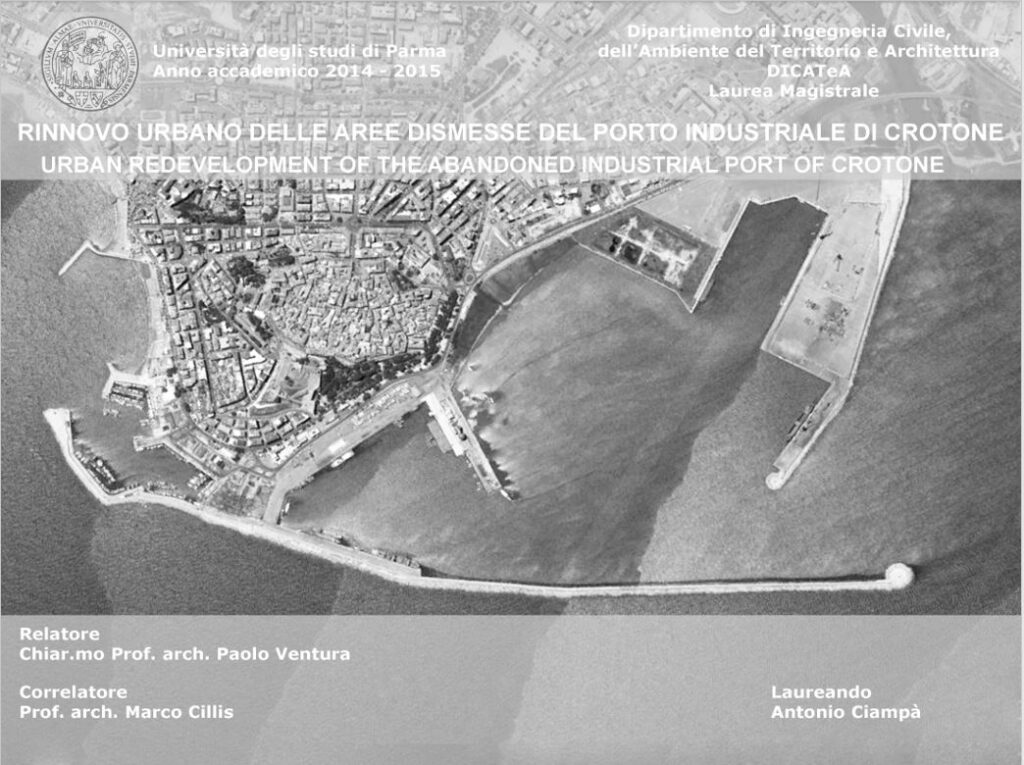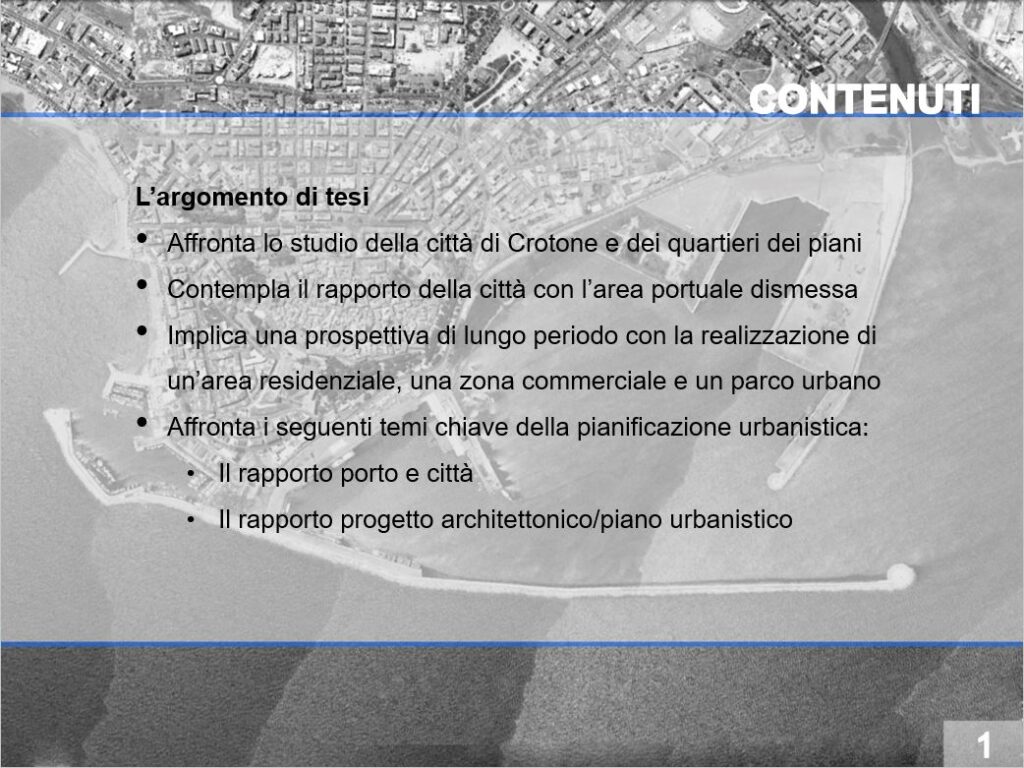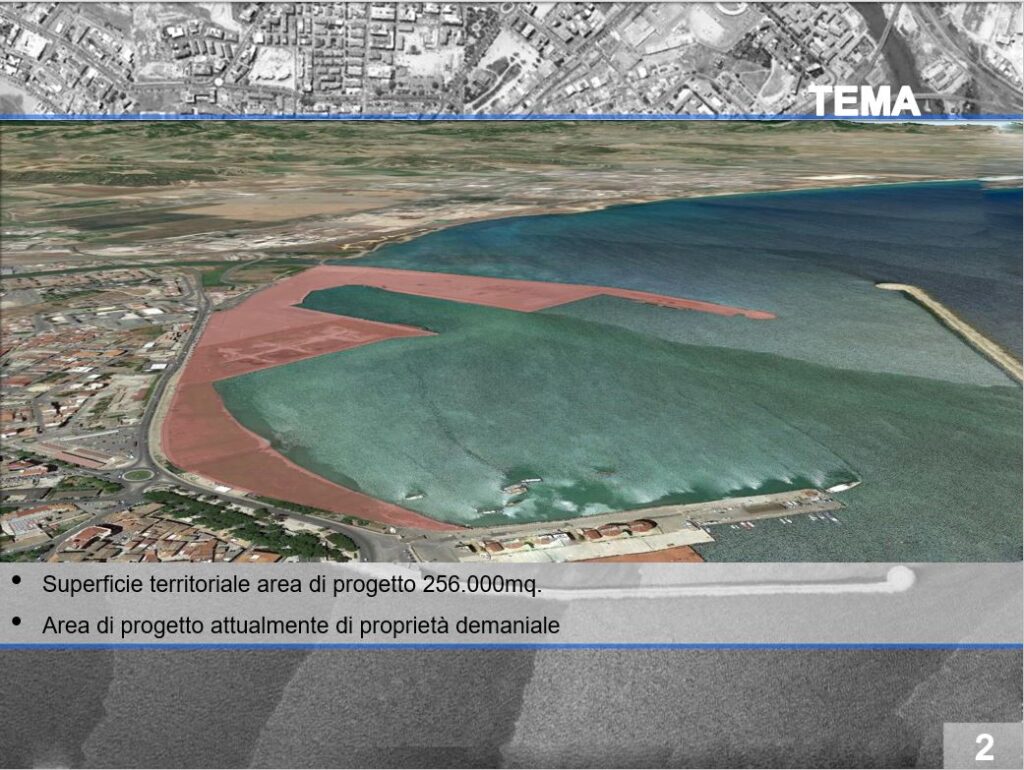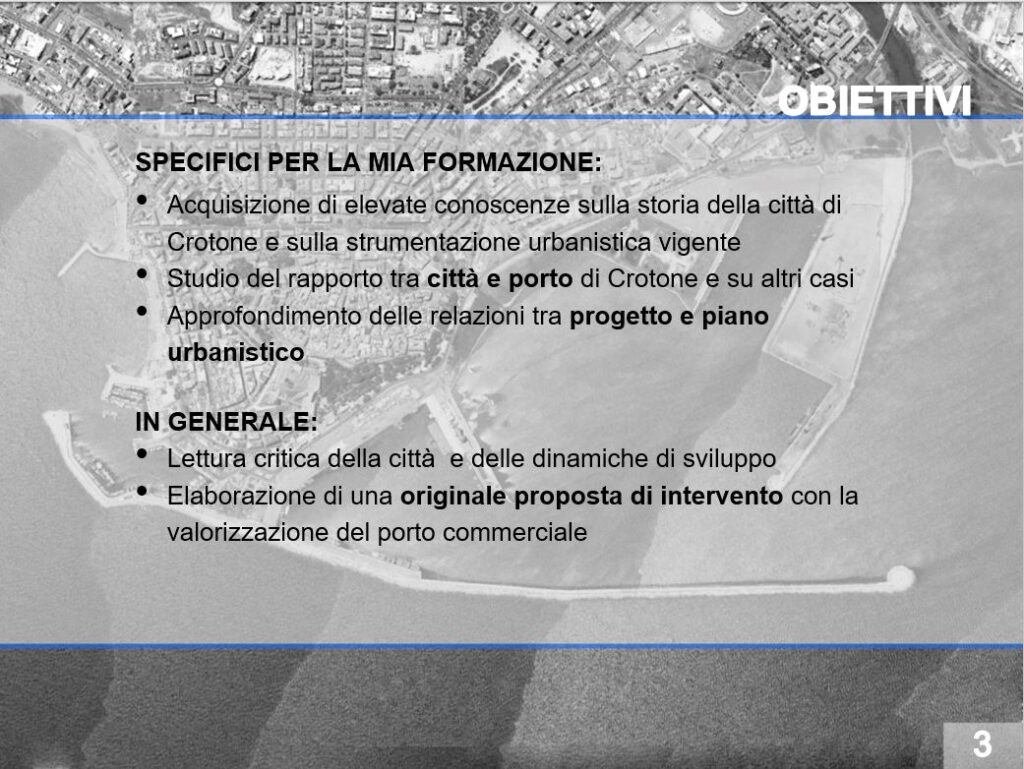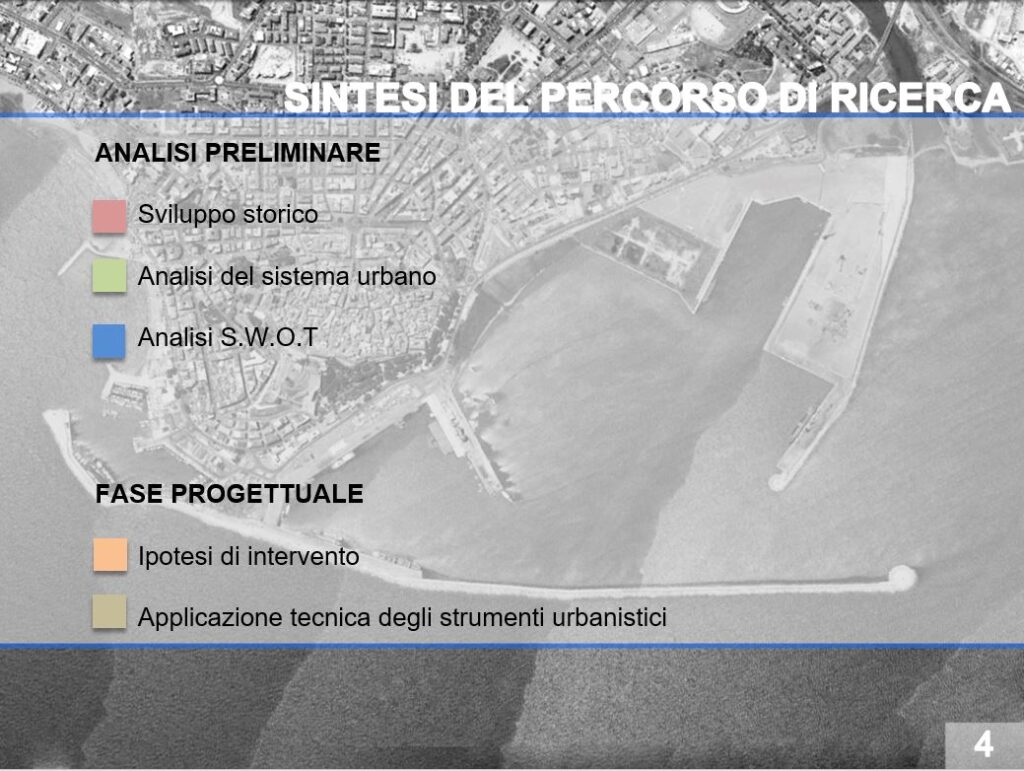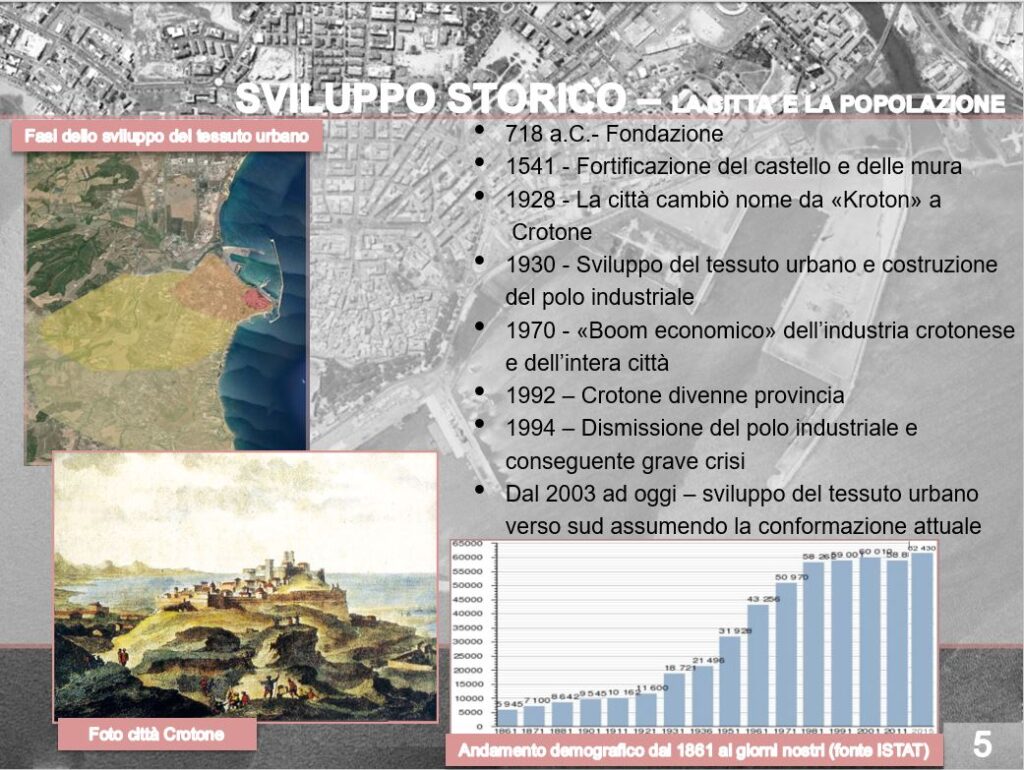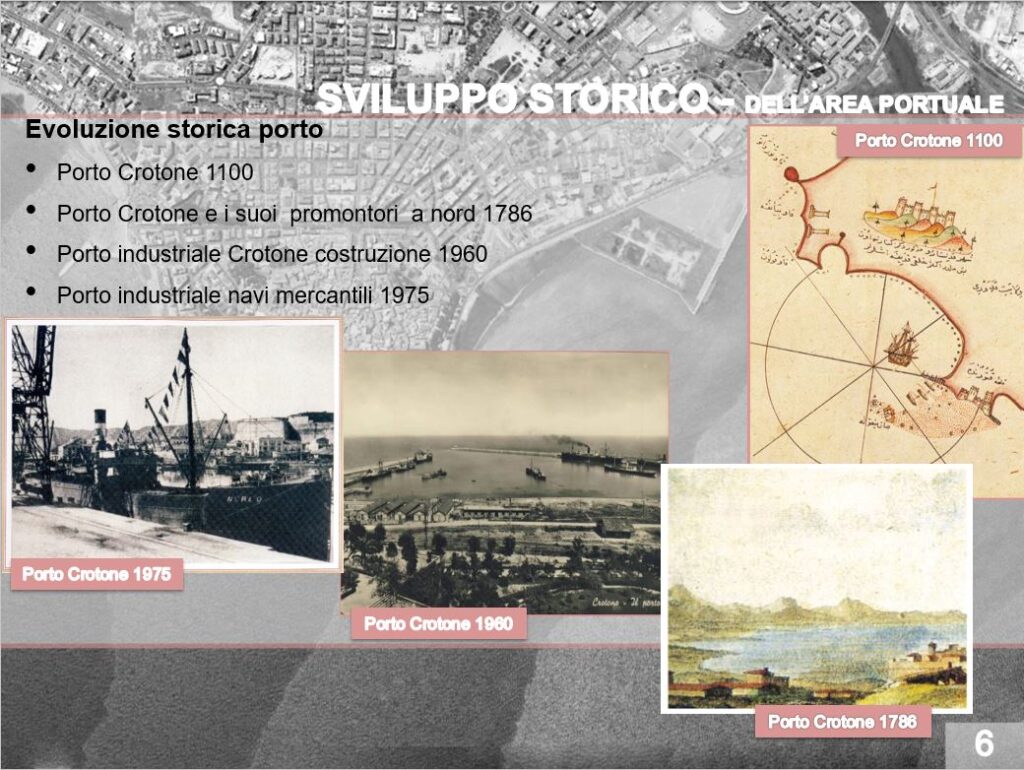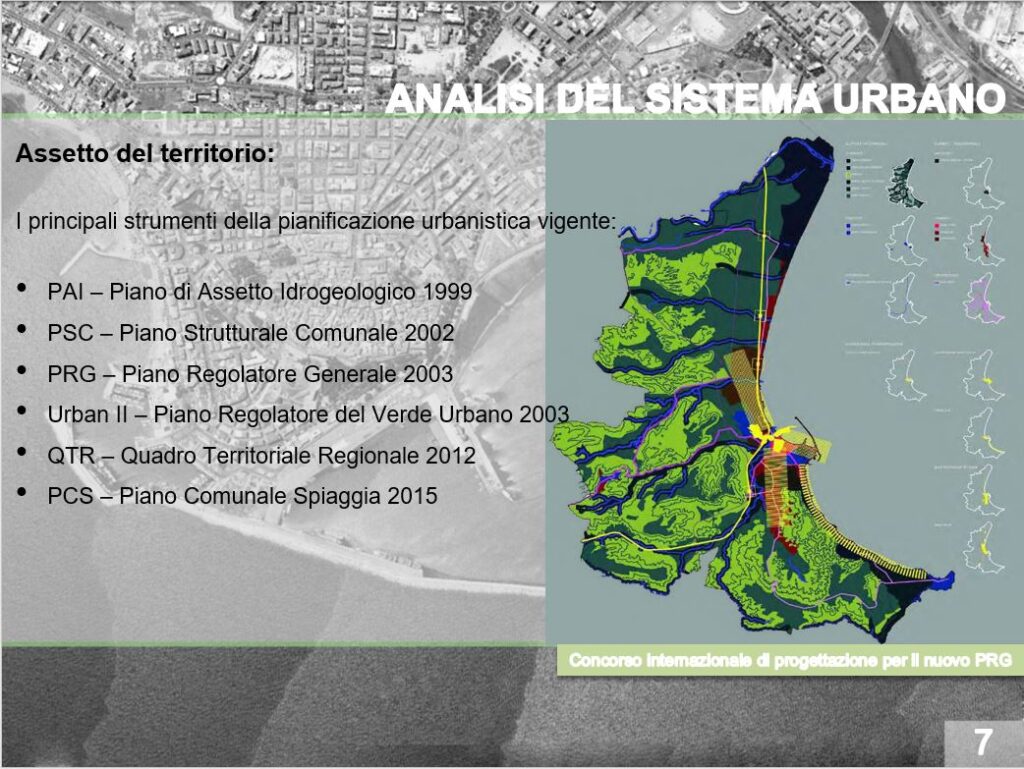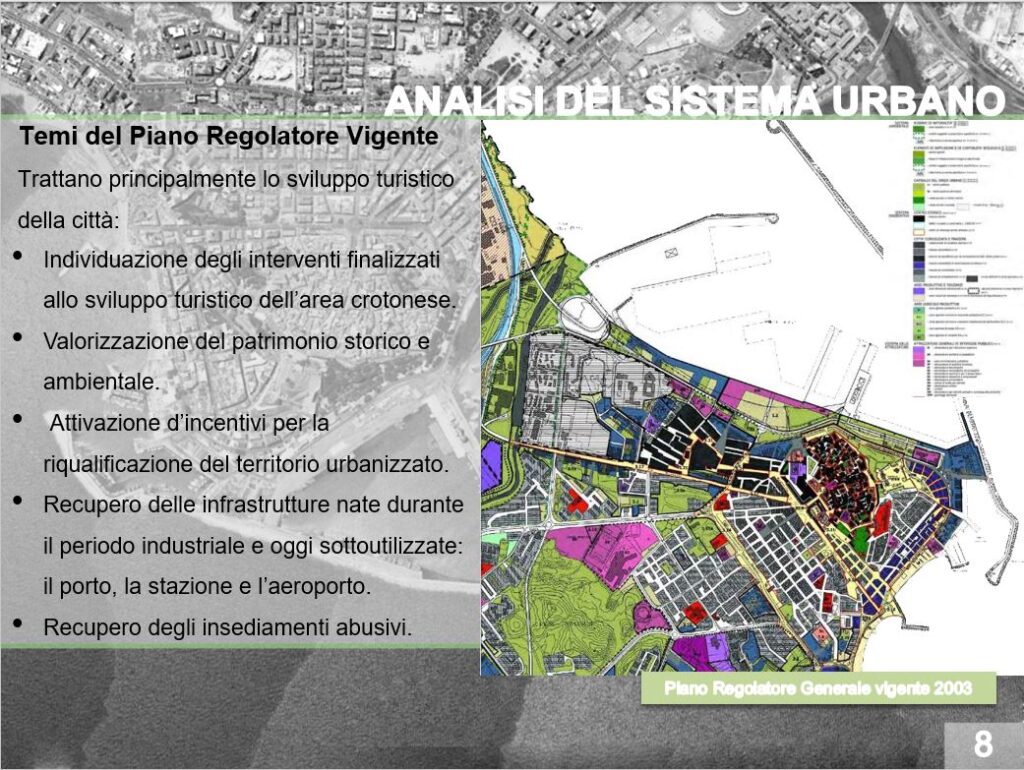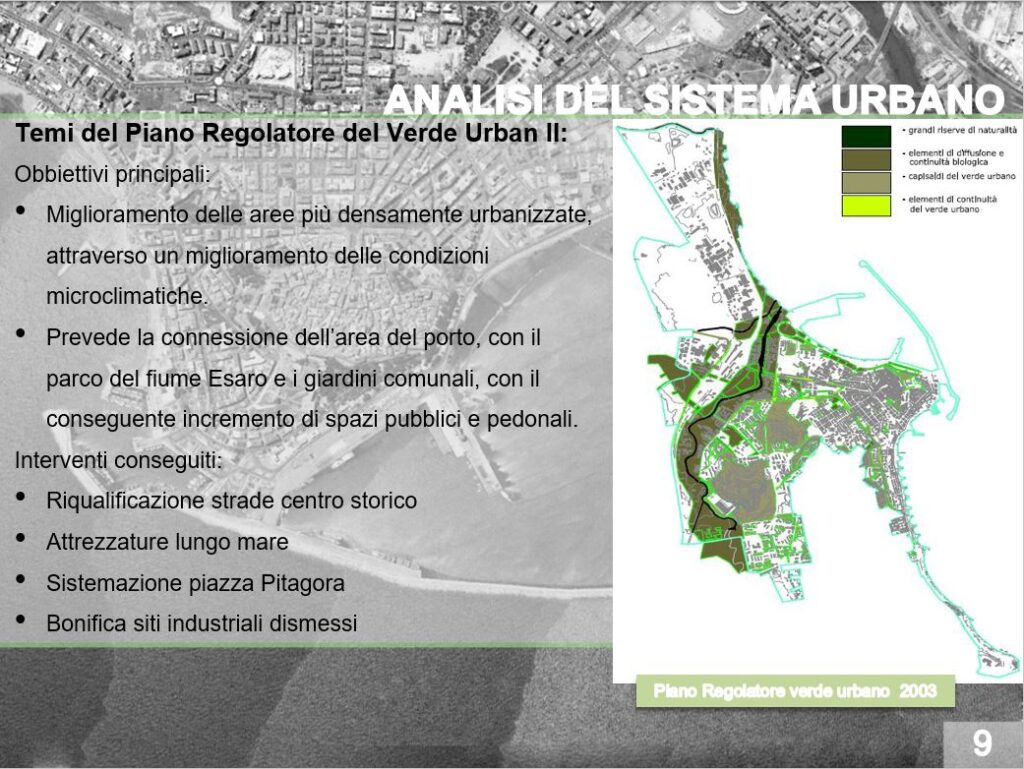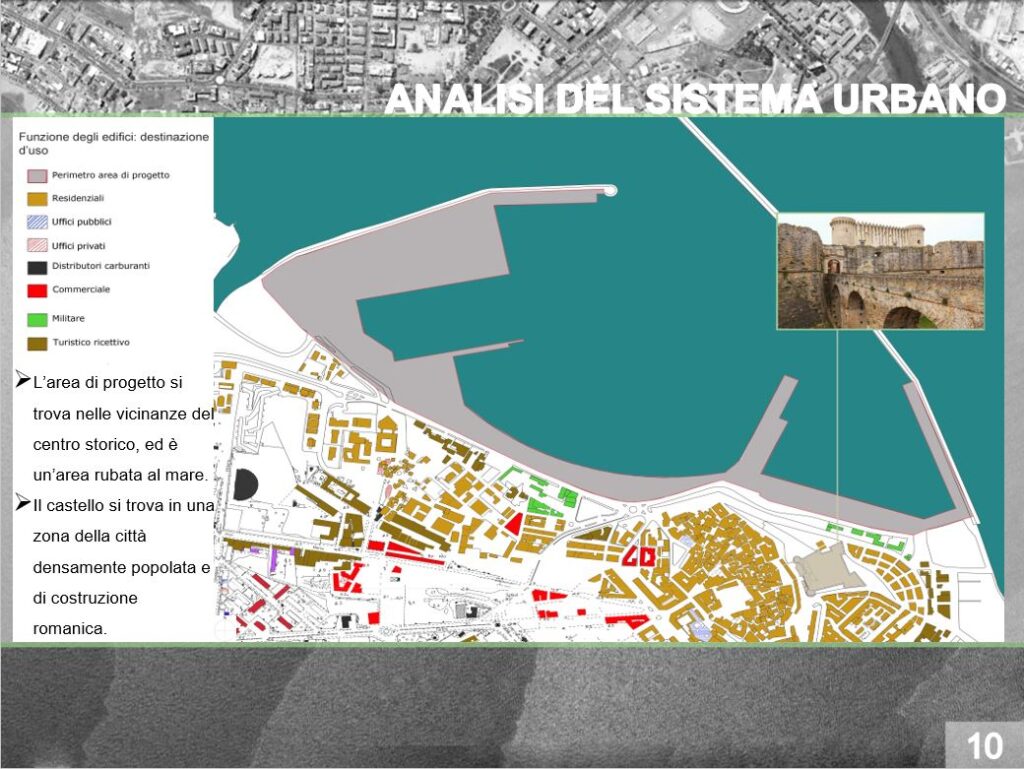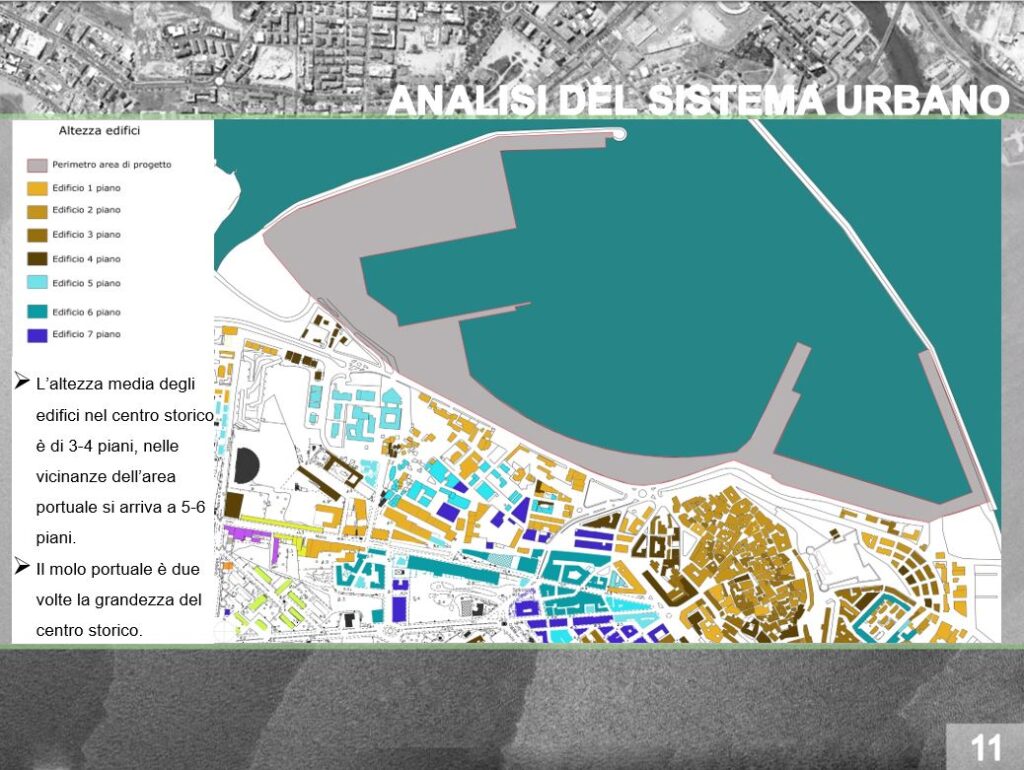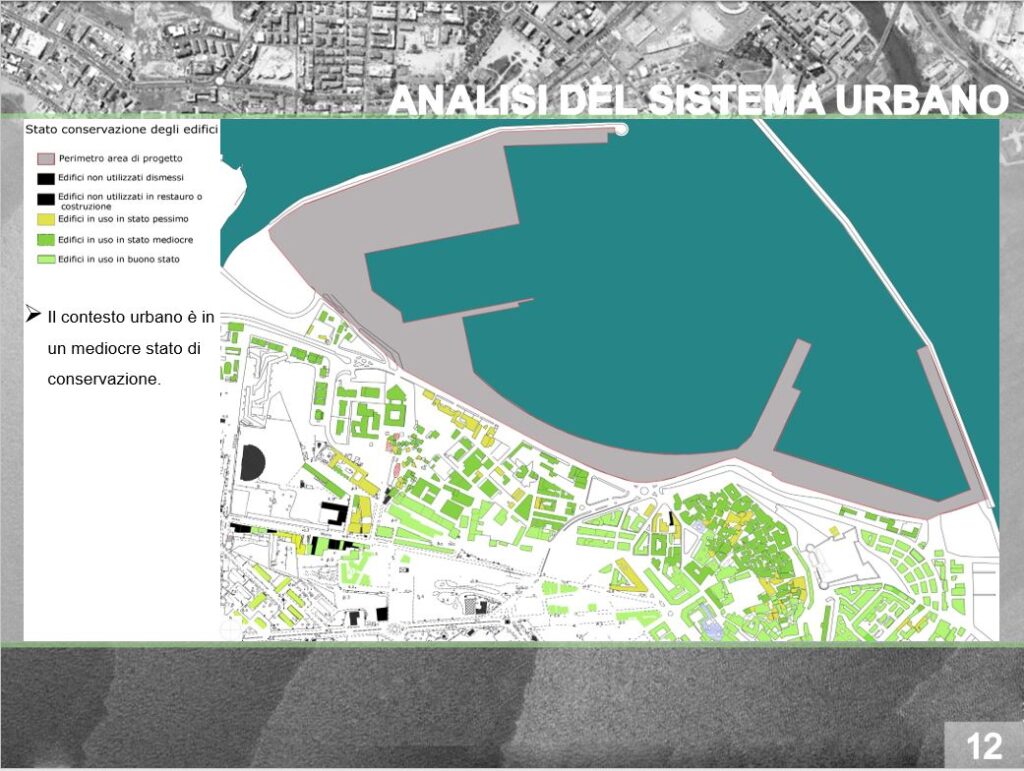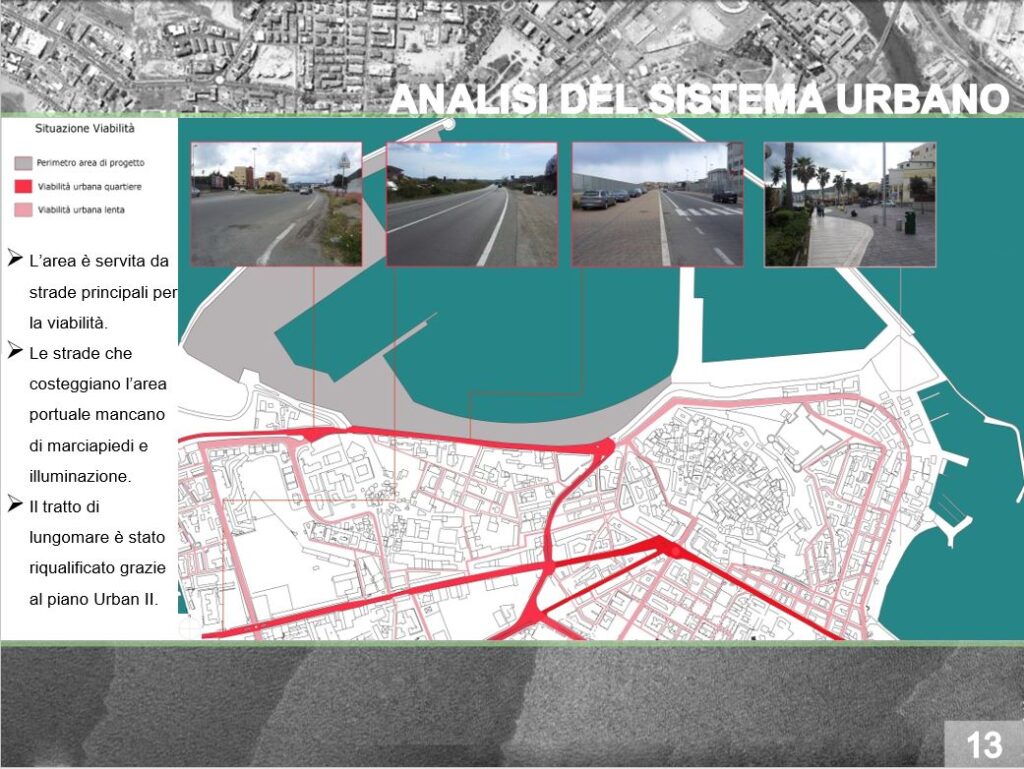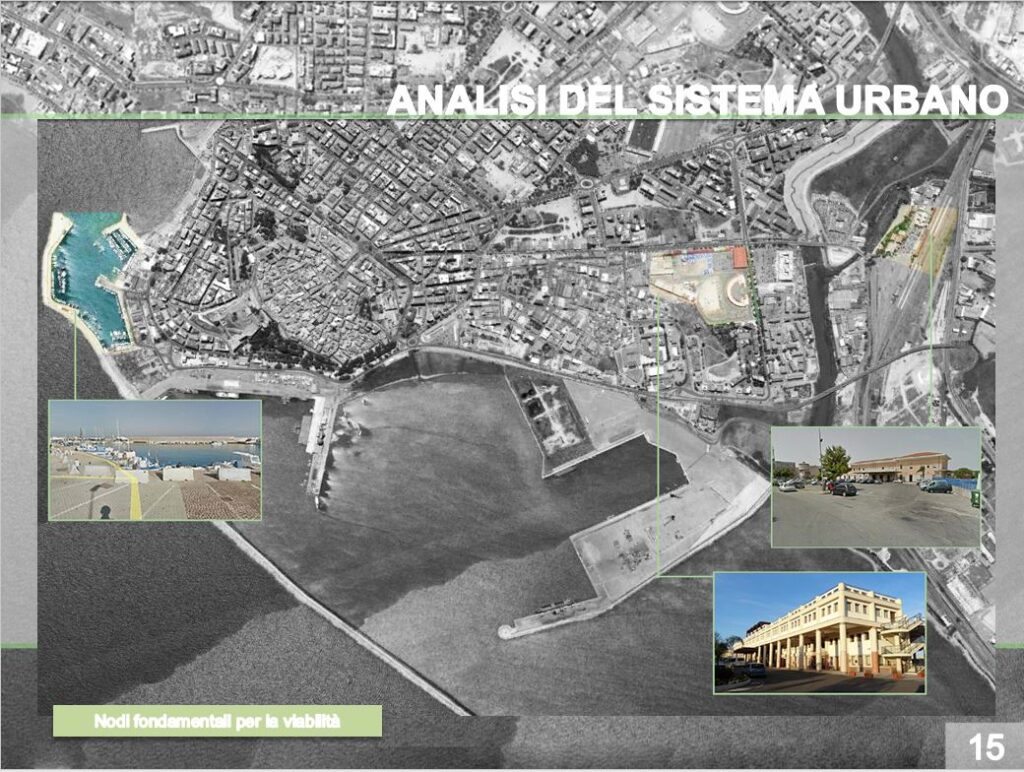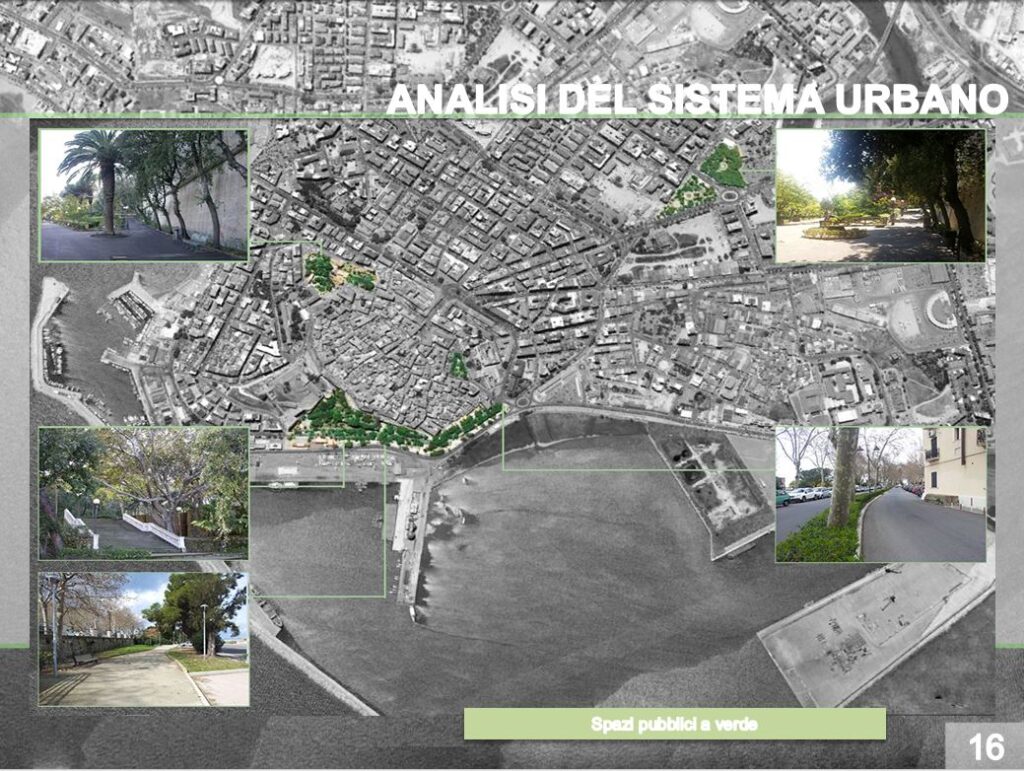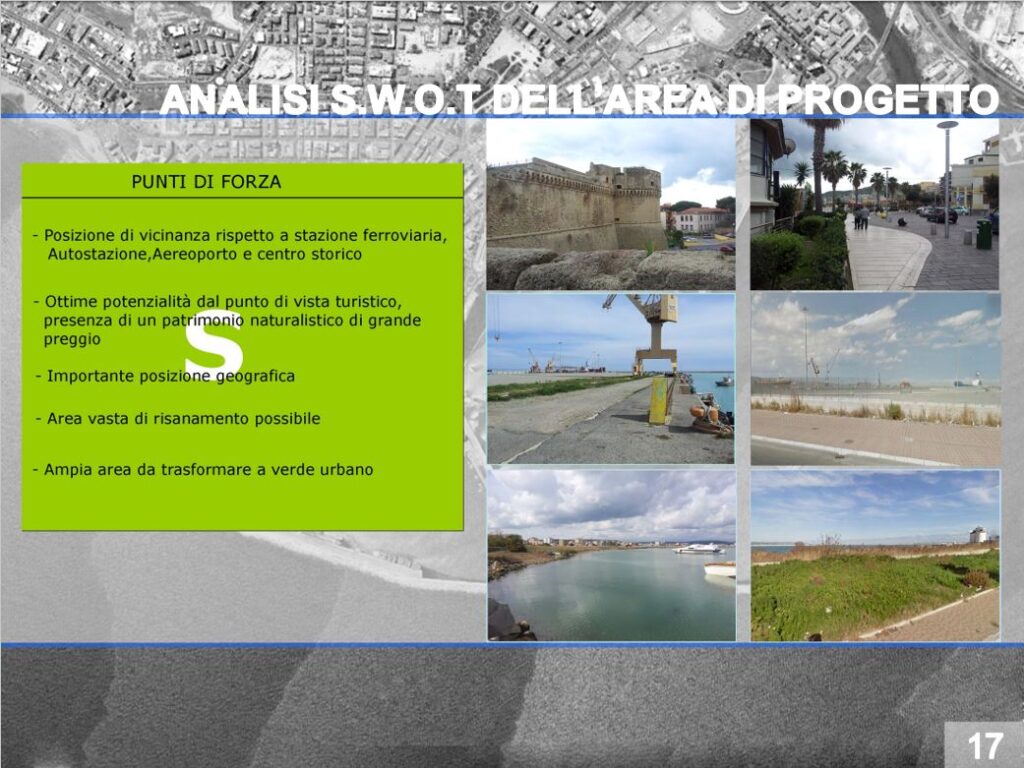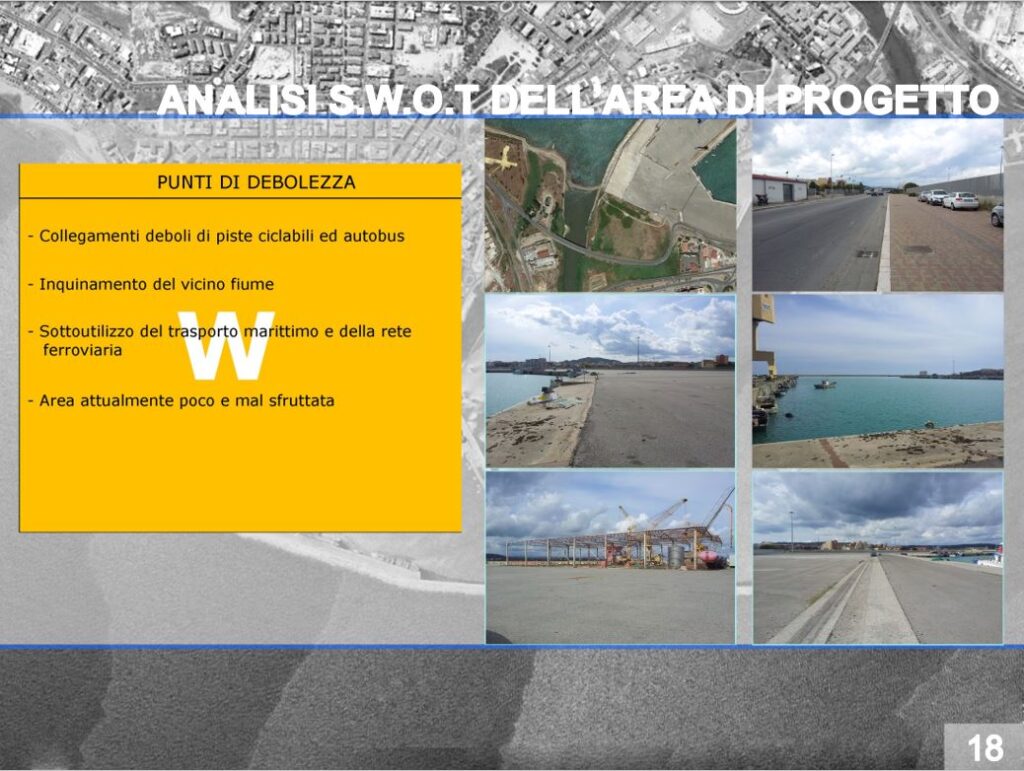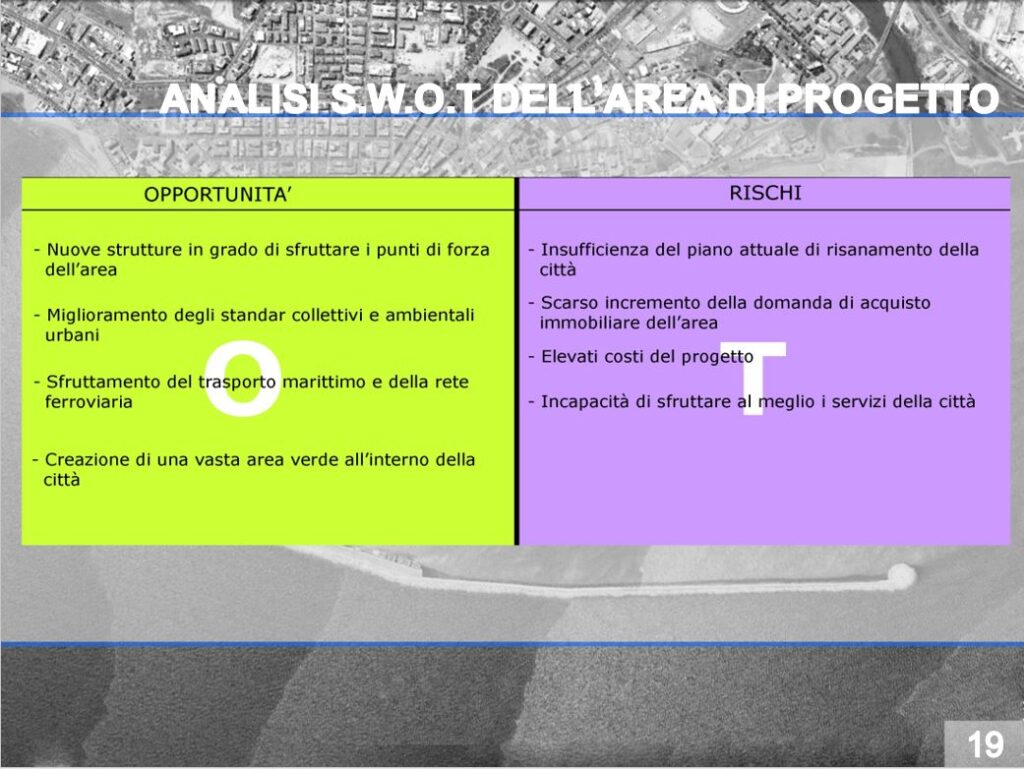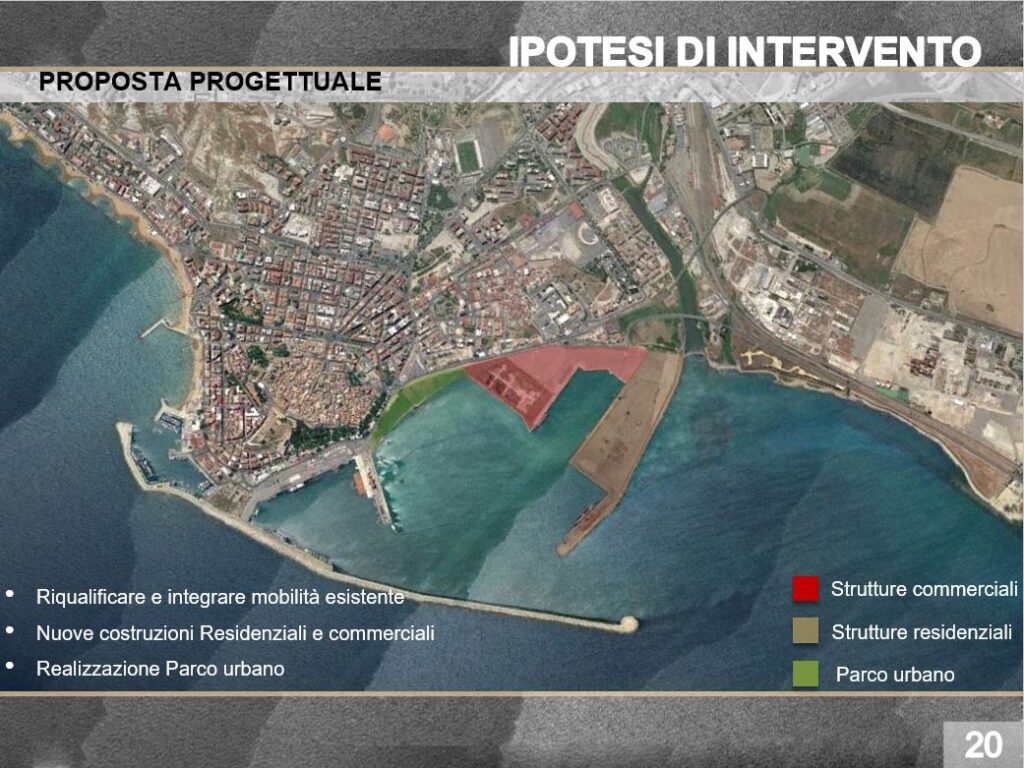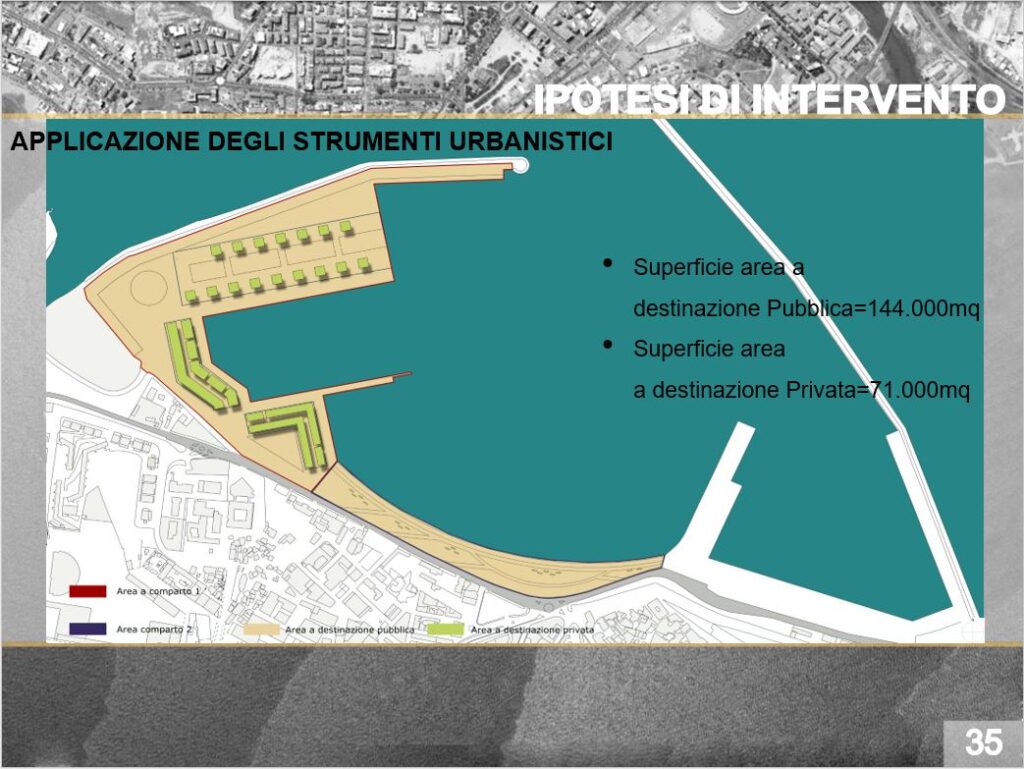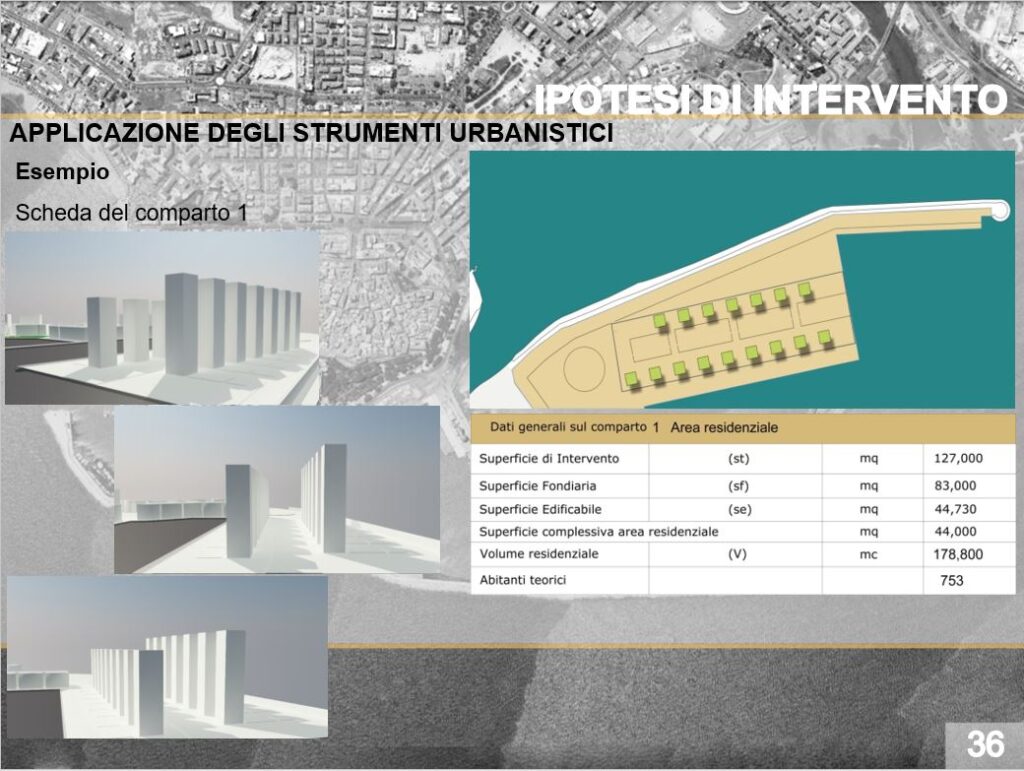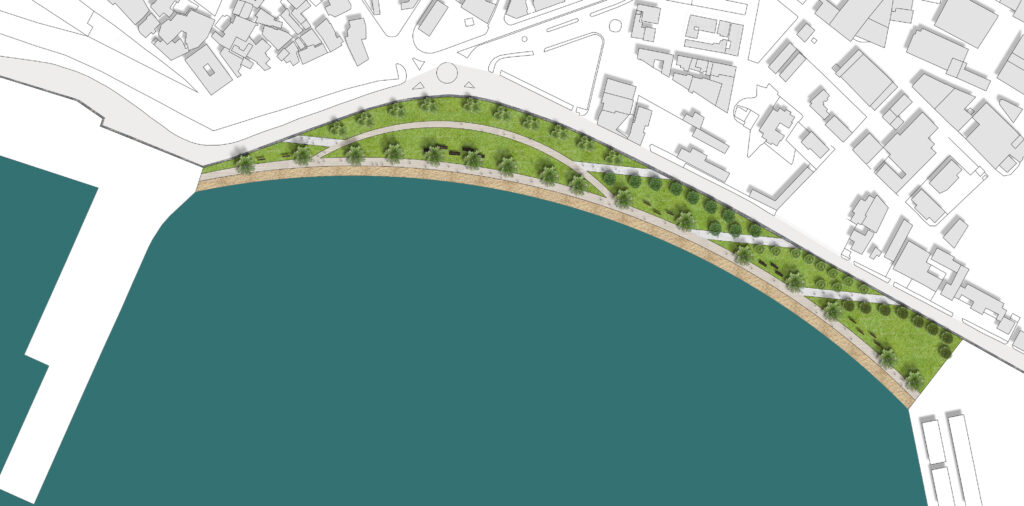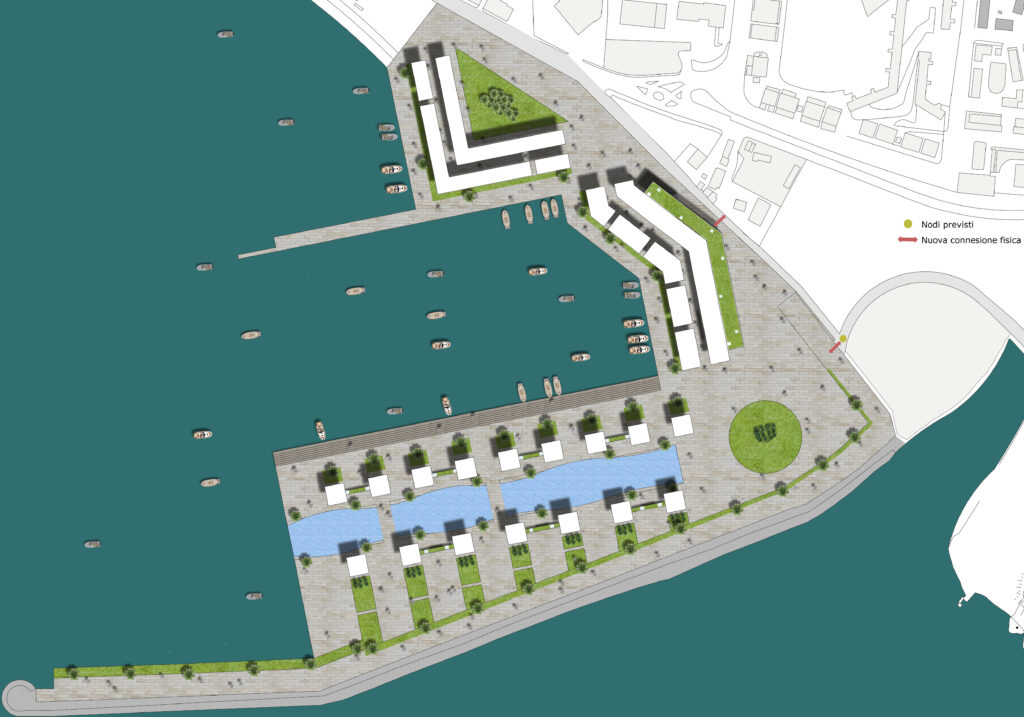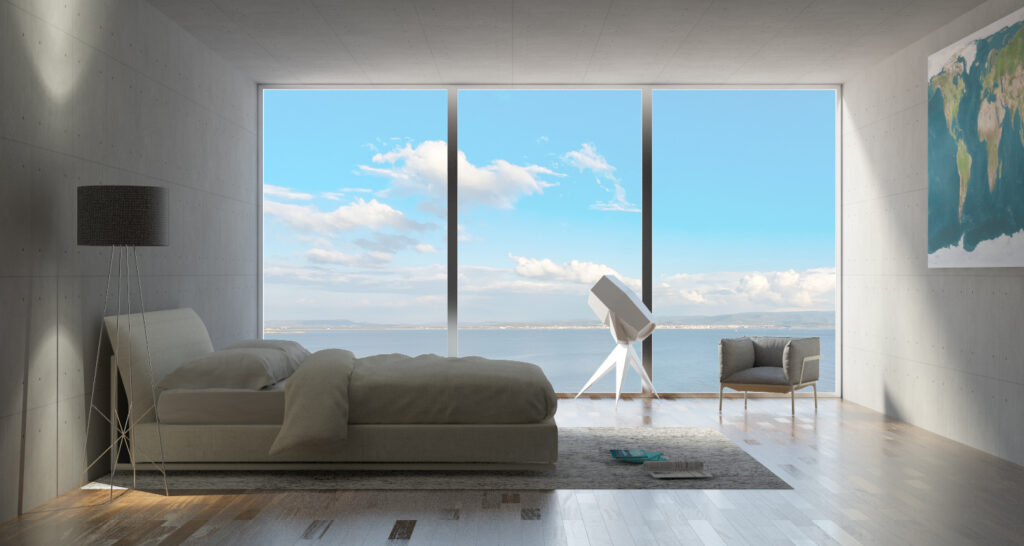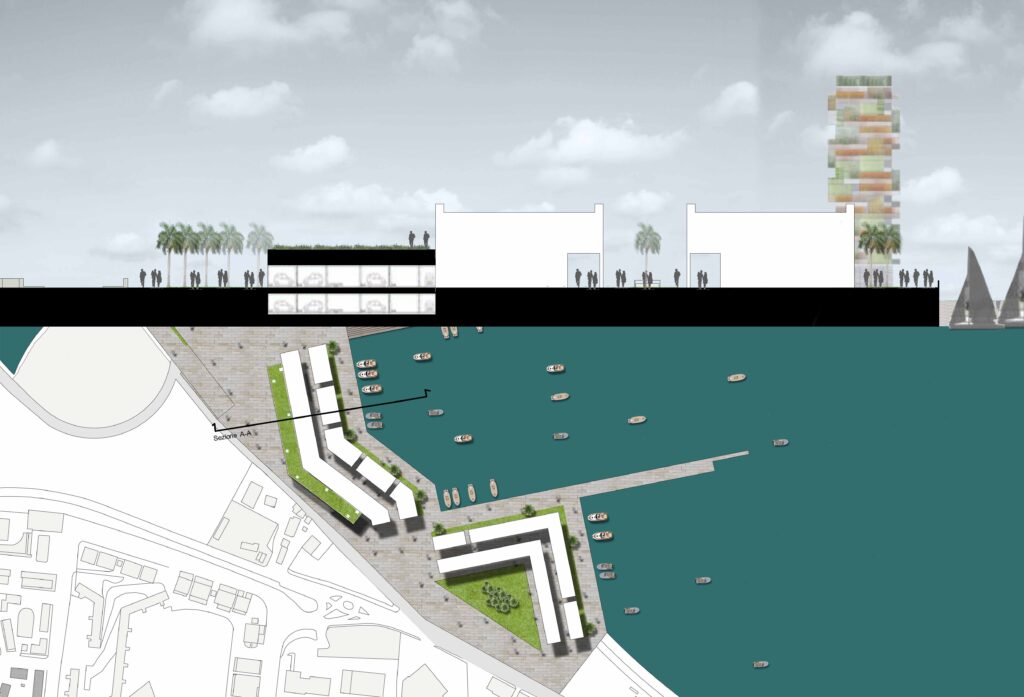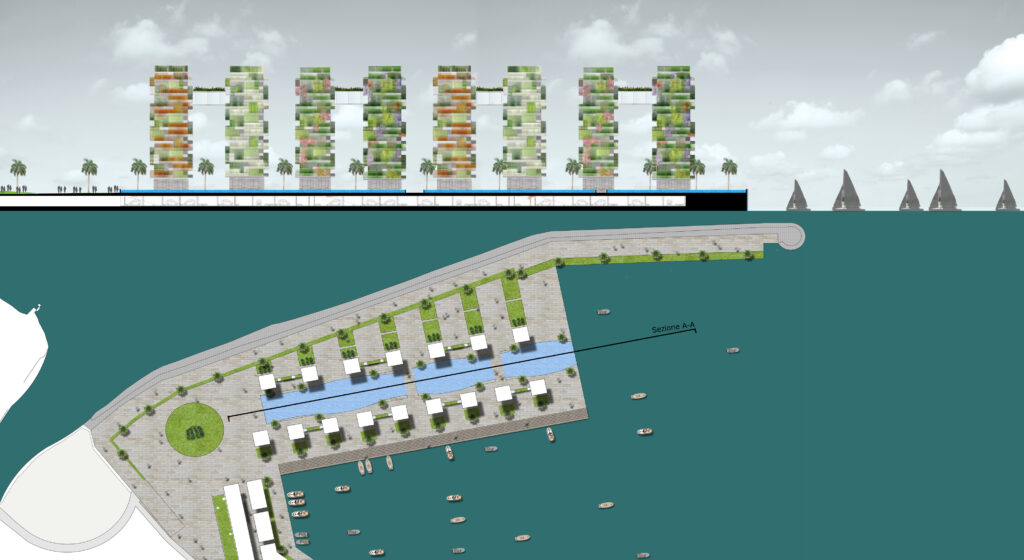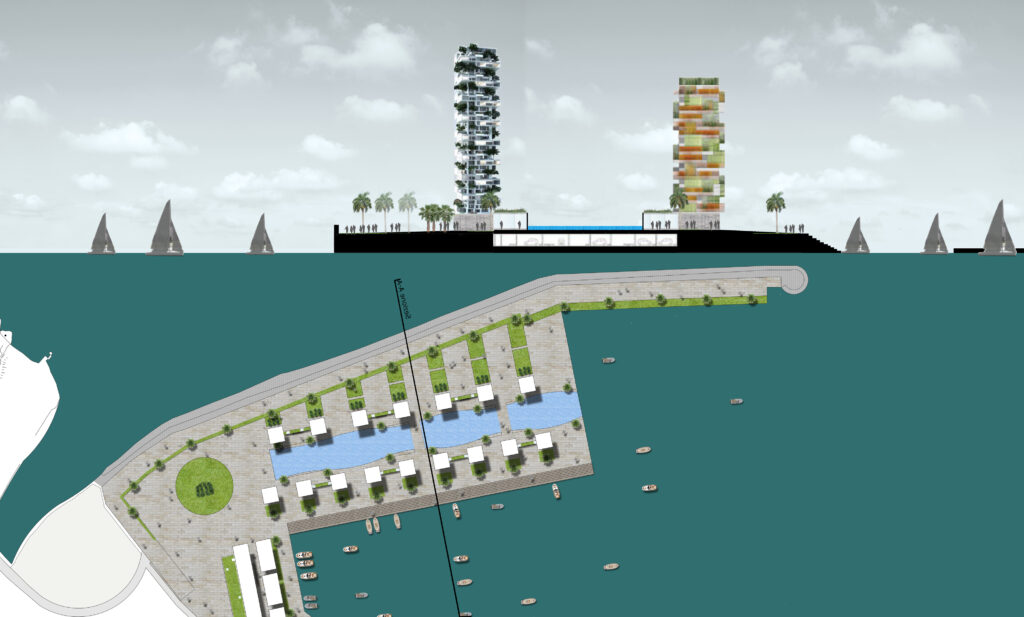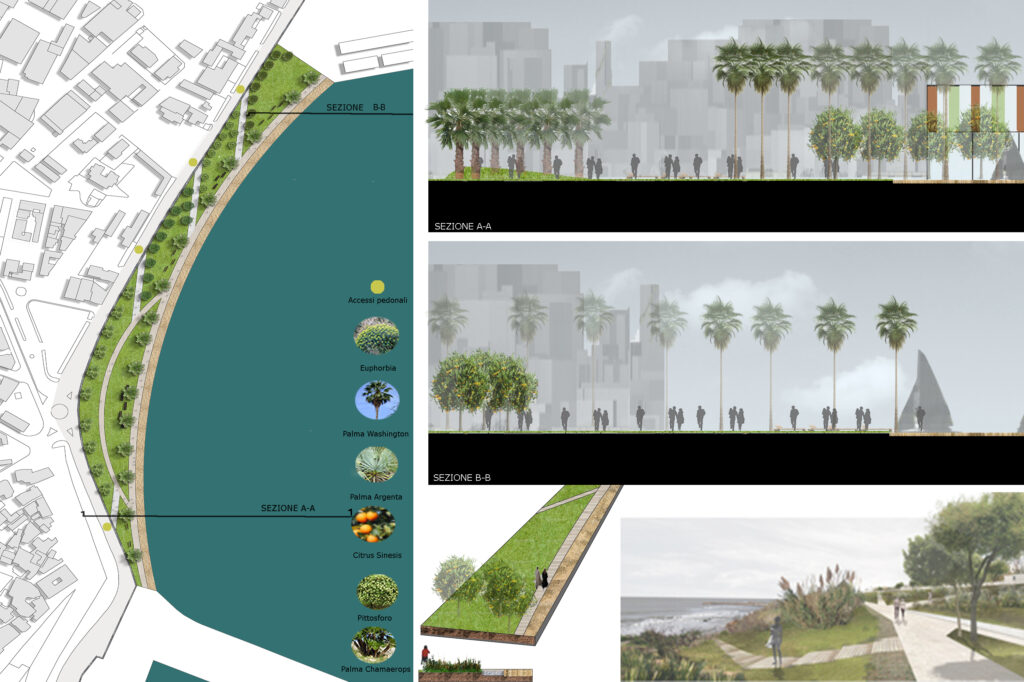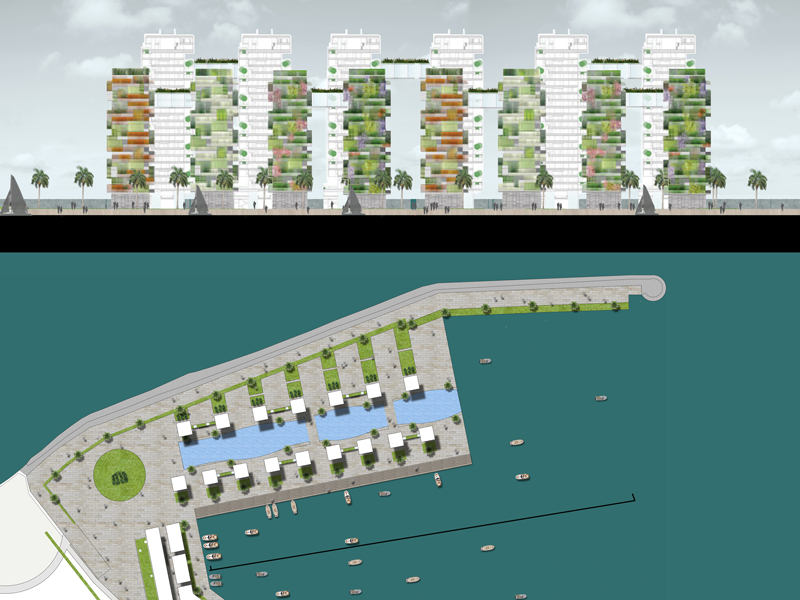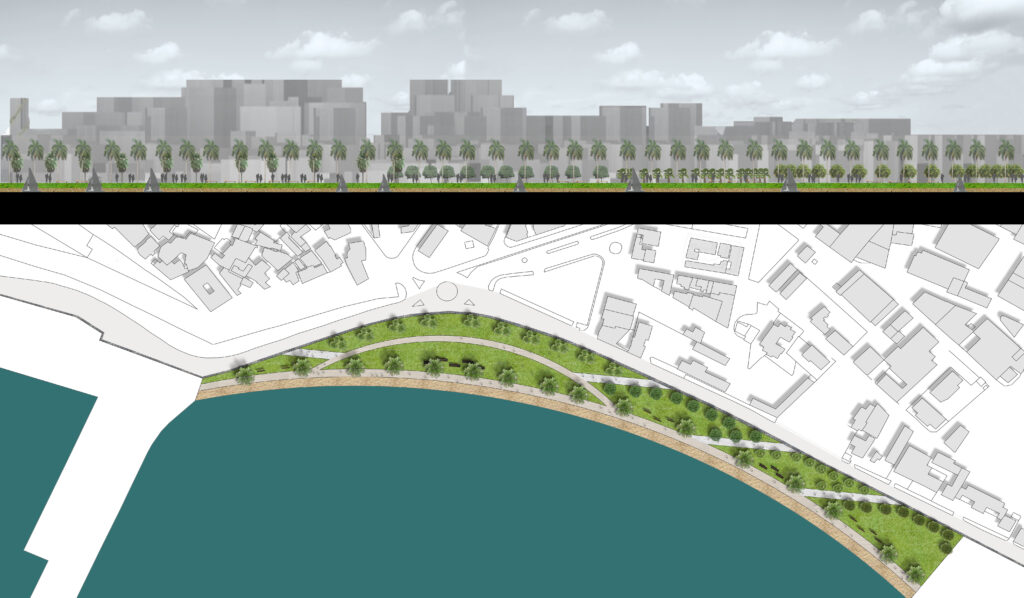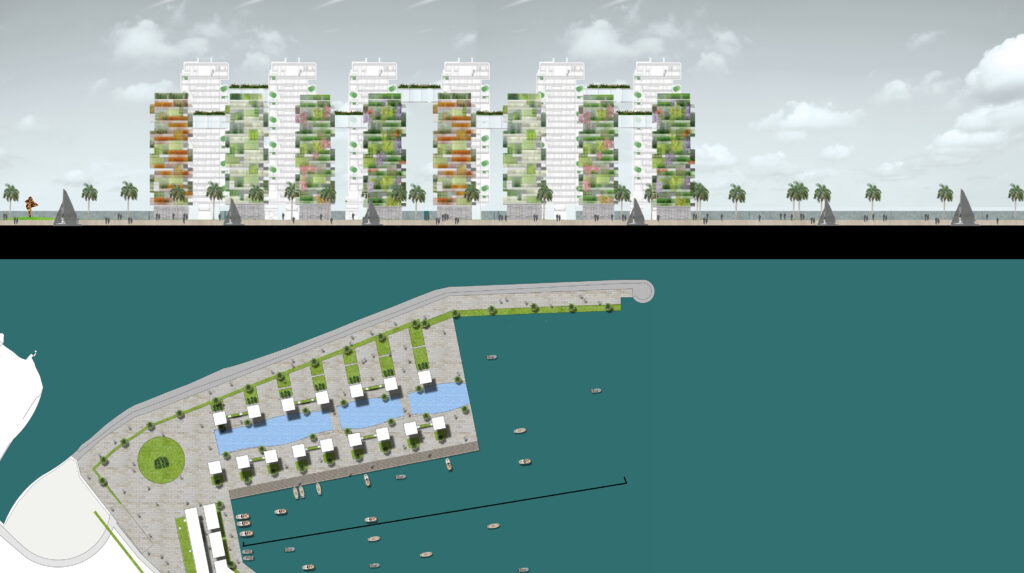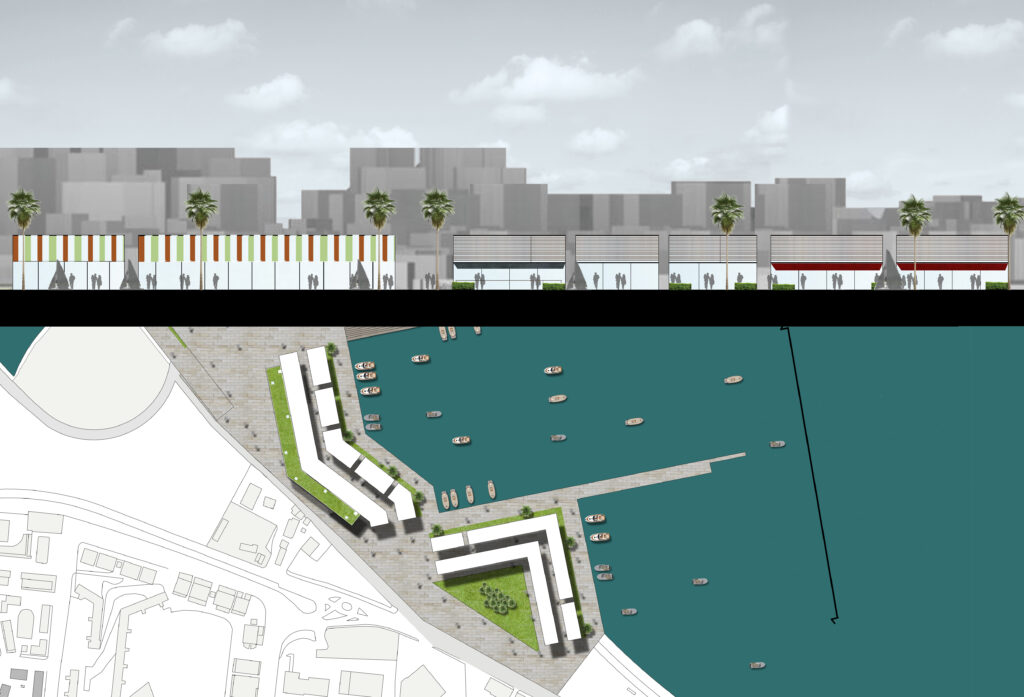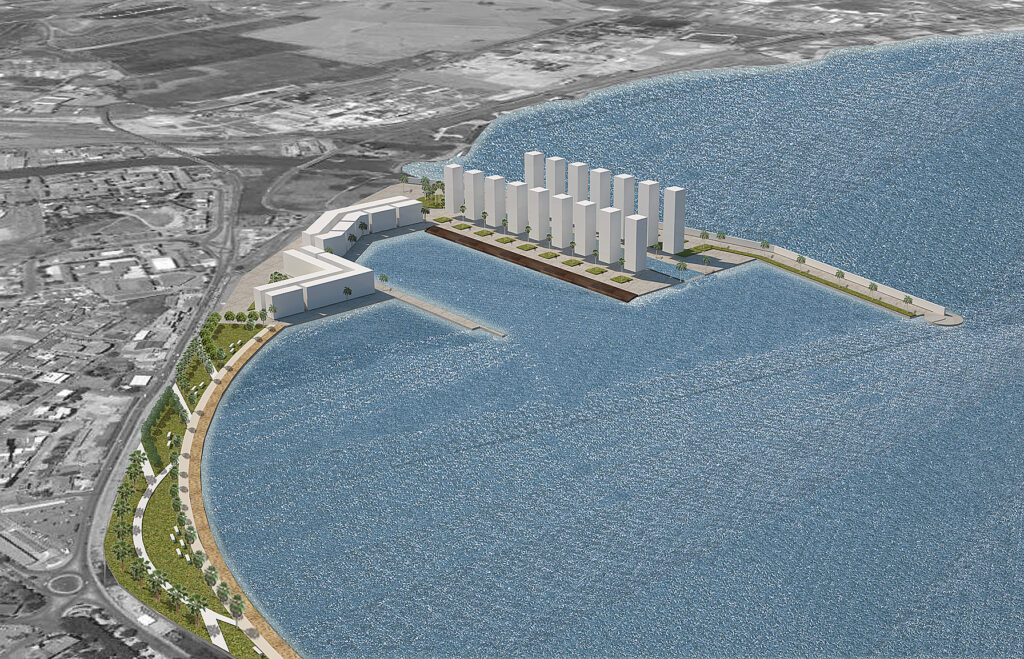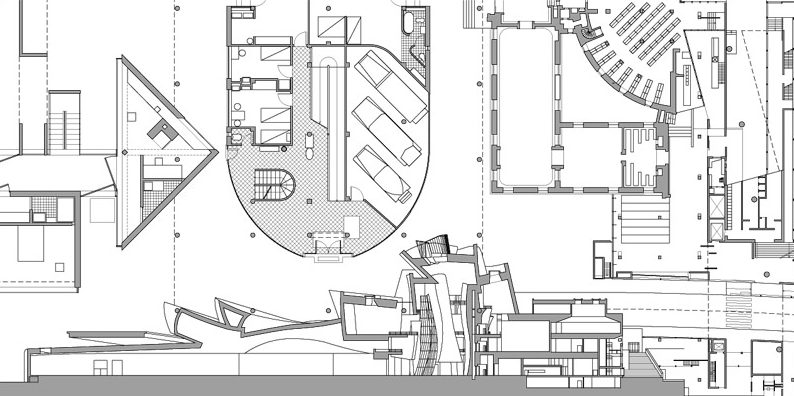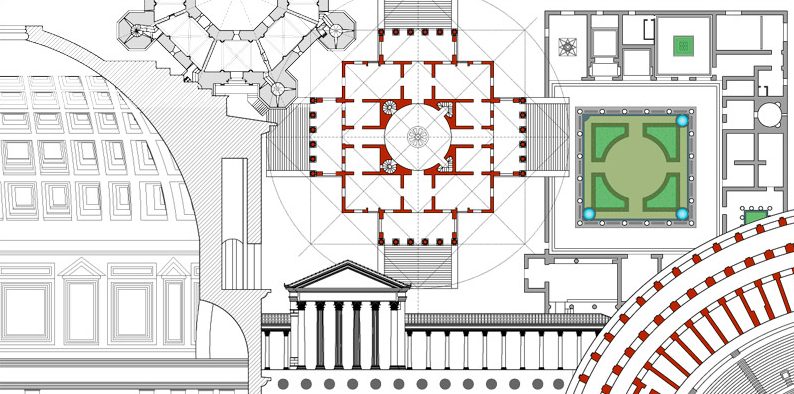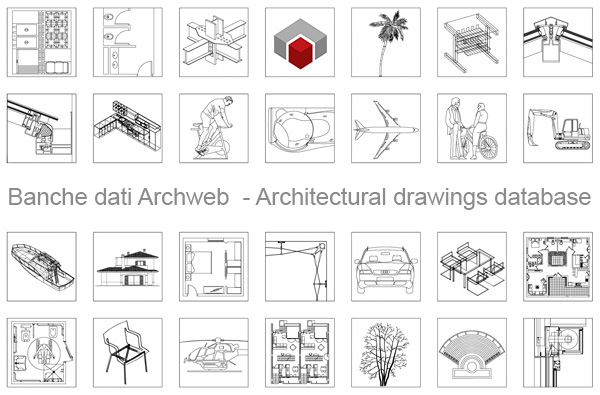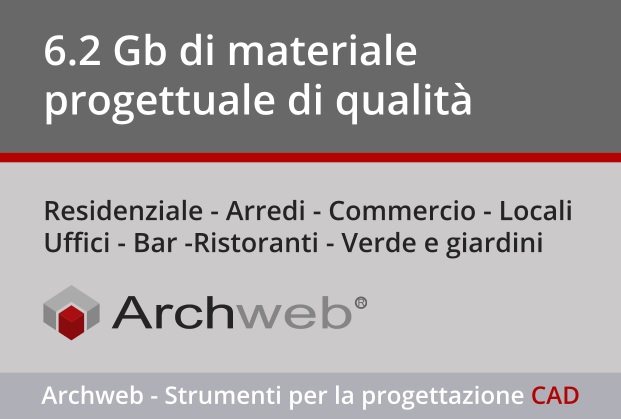Antonio Ciampà
Degree thesis in Architectural Design
Urban renewal of the abandoned areas of the industrial port of Crotone
Thesis by Antonio CiampàContact email: [email protected]
Faculty of Architecture of the University of Parma
Speaker: Prof. Paolo Ventura
A.A. 2014 - 2015
The thesis deals with the study of the area of the commercial port of the city of Crotone, capital of the homonymous province. This area born in 1950 until the early 90s mainly exploited by the nearby industrial area. The characteristics of the Crotone industry by their nature concerned the basic chemistry sector. The dismantling of the chemical center and the consequent serious employment crisis led to the closure of the industrial area in 1994, with heavy repercussions on the commercial port. The Port of Crotone has a geopolitical and geo-economic function that cannot be exhausted within the geographical boundaries of the area of which Crotone is the natural capital. In recent years, various initiatives have been implemented, including the arrival of the cruise ships concluded immediately and in a bad way given the too low backdrop. So it is currently a very important area of the city but little and poorly used.
The first phase of knowledge is structured through the following urban analyzes:
- Provincial territorial framework and subsequent study of the municipality of Crotone.
- Analysis of the morphology of the Crotonese municipality.
- Study of urban planning tools.
- The local production system.
- Analysis of the inhabited area.
- Analysis of the tourist system.
- Urban evolution.
- Analysis and critical reading of the project participating in the competition of the new town plan of the Municipality of Crotone.
The second phase concerned the design aspect, or the study of the regeneration of the commercial port.
The initial study started with the reading of the P.R.G. of 2003 which aims to give the municipality new areas to be used for green areas and residential buildings. My proposal provides for the enhancement of the entire commercial port area, by dividing the area into two different sectors:
Section 1: The residential area and the Commercial area
The development of the residential area takes place on the entire industrial pier with a very large surface that has allowed me to build sixteen towers with different heights, buildings known and suitable for my case study have been created. They are connected to each other between large corridors in glass. Within this area, swimming pools with different shapes are created, paths inside and consistent green spaces and reliefs. Underground, near the swimming pool, I also built underground car parks for the residents of the towers.
The commercial area was developed on the central quay of the port, this area was designed as a meeting point for the entire population of the province of Crotone, characterized by a large commercial area designed with various types of commercial activities, shops, restaurants . With four buildings in line, six meters high. There is also a building built as a commercial car park with an underground floor and one on the ground floor, designed with a roof garden. The area is characterized by internal paths and a green square.
Section 2: Urban park
In this sector I have kept the original land use of the area, i.e. green. This area is currently in a state of complete abandonment, closed on the main road and isolated from the territory and the surrounding port area. Starting from these shortcomings, the idea of designing an urban park such as to revitalize and give a green belt to the whole area of the port and the city was born. I have developed different routes within the park that open it to the whole city. Inside, some species of trees and plants characteristic of the Mediterranean green bush were chosen.
Through the elaboration of the thesis work, I wanted to demonstrate the potential and possibility of economic, social, cultural growth, the environmental and landscape enhancement of the area under study and of the whole city, in this regeneration path.
Antonio Ciampà
Author
Category Antonio Ciampà
